






Datascape is a modern, cloud-based software suite designed specifically for local councils to streamline their operations, boost efficiency, and enhance service delivery — all while reducing complexity and administrative burden for council teams.

Purpose-built for local government in Australia and New Zealand.

Integrated ERP modules and standalone digital tools with robust reporting.

Open, API-rich software for seamless integration into your council’s existing digital ecosystem.


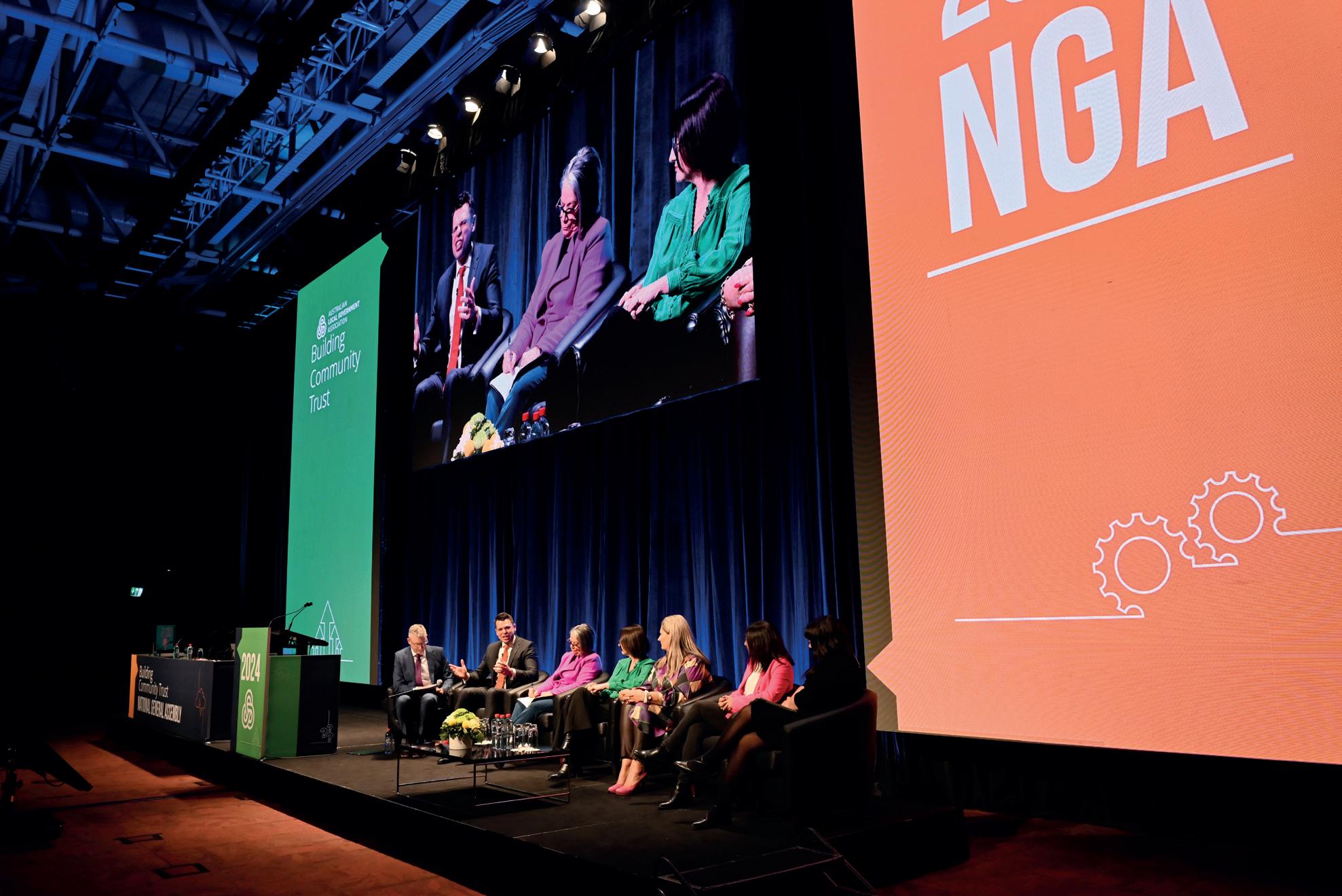
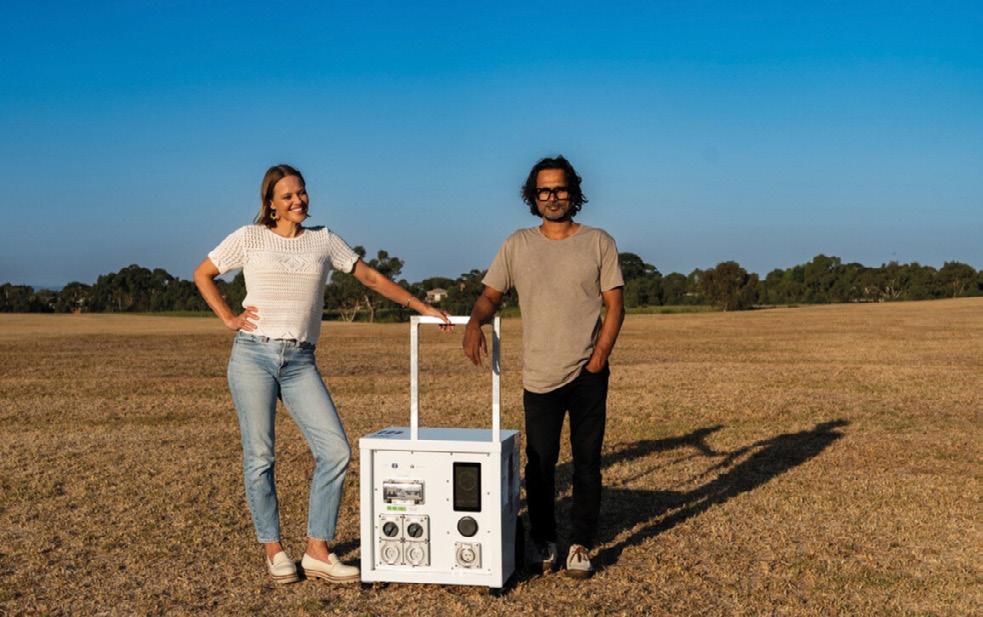



3 - y e a r s u p p o r t p a c k a g e B U Y A N E W 1 4 - 3 5 T V o l v o e x c a v a t o r a n d g e t +














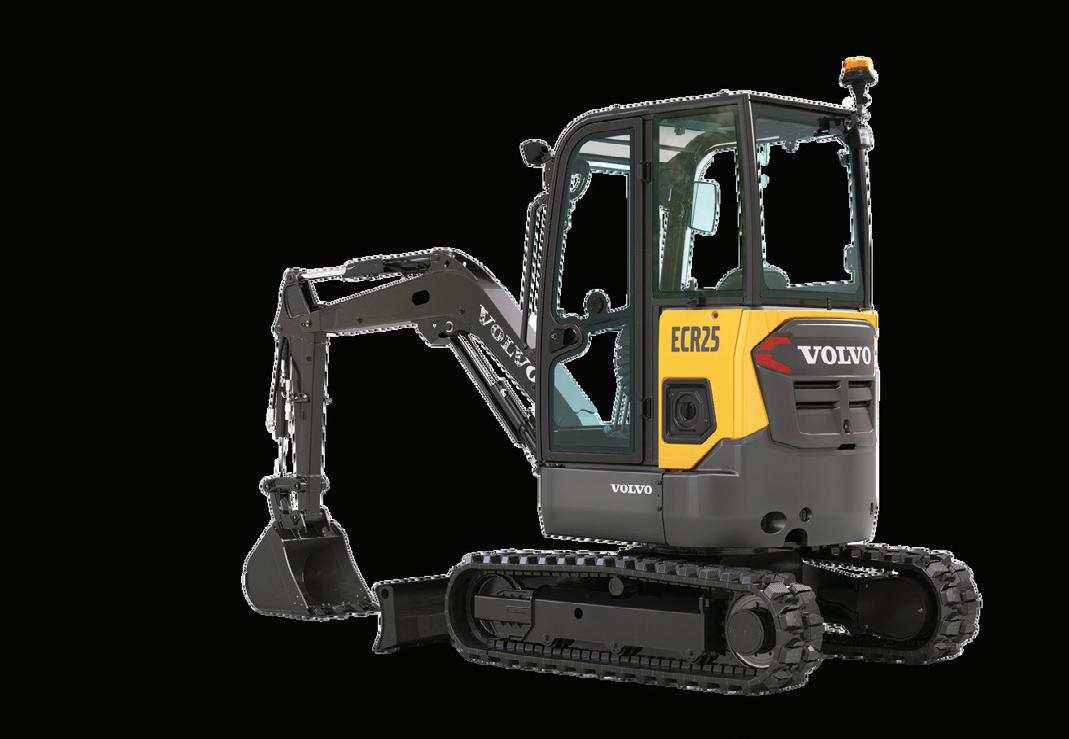


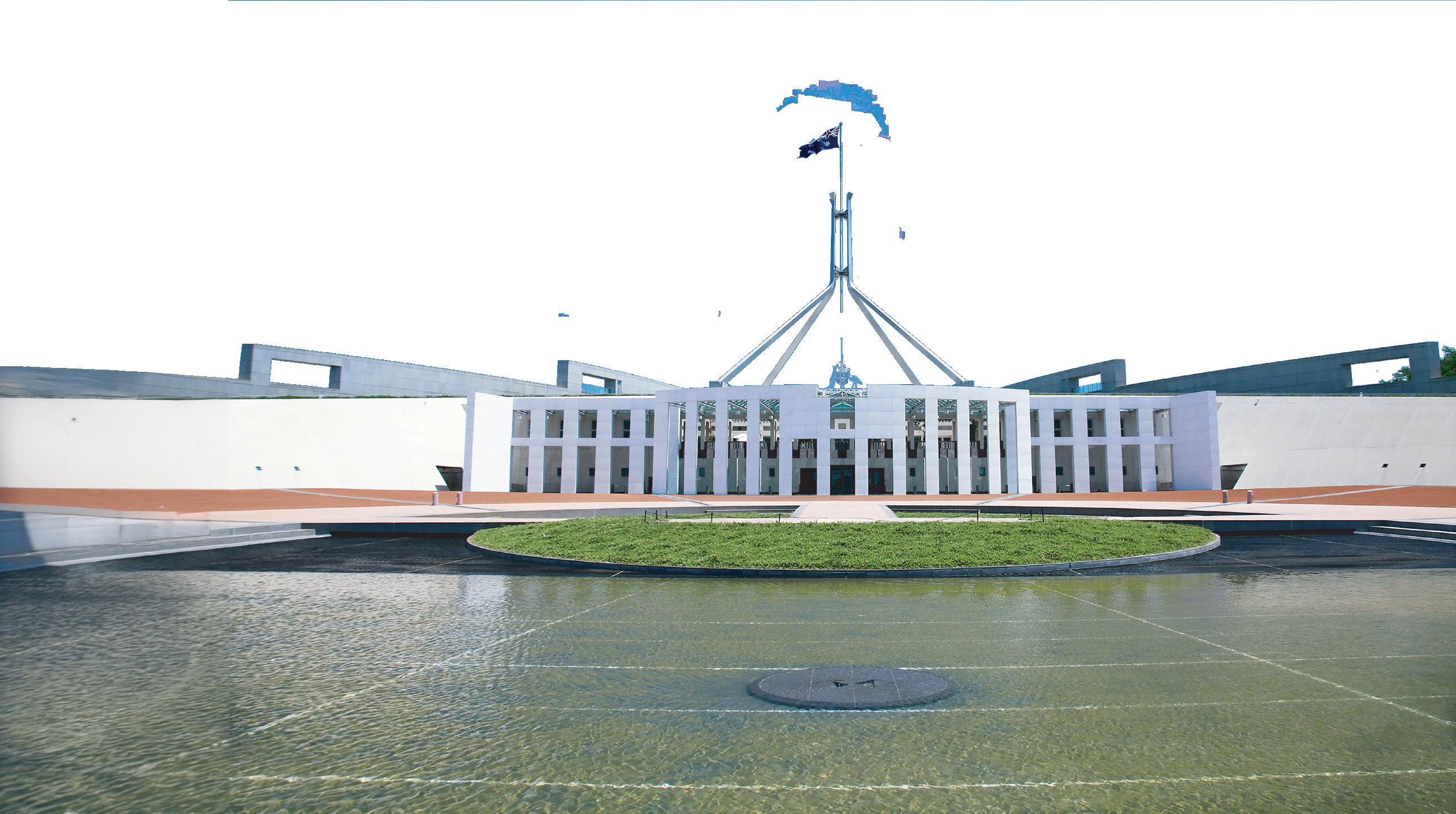


In every edition of Council magazine, we choose one local government from across Australia to shine a spotlight on. Whether it’s new infrastructure, an innovative technology project, a leading sustainability initiative or a community connection, we want to highlight the best of local government and share some valuable knowledge to other place makers across our nation. This edition, we spoke to the City of Palmerston.
1. WHAT IS THE POPULATION SIZE AND LAND AREA OF YOUR COUNCIL?
Situated approximately 20 kilometres from the Darwin central business district and 10 kilometres from Howard Springs and the surrounding rural areas, the City of Palmerston is home to 41,054 people and encompasses an area of 72 square kilometres.
2. HOW MANY EMPLOYEES WORK AT YOUR COUNCIL?
Council employs 100 staff.
3. WHO IS THE MAYOR?
Athina Pascoe-Bell is the Mayor of Palmerston. With 20 years in spatial science, split between private and public sectors in New South Wales and the Northern Territory, she brings extensive governance and planning
expertise to the role. Mayor Pascoe-Bell prioritises sound decision-making and quality outcomes and is eager to collaborate with diverse community groups within the Palmerston community and beyond.
4. WHO IS THE CEO?
Andrew Walsh is the City of Palmerston’s chief executive. An experienced and transformational leader in local government, Walsh brings over 13 years of public sector leadership and an impressive track record of delivering community-focused outcomes, driving growth and strong governance. Walsh is an authentic leader, with a strong history of fostering a workplace culture where staff feel valued and engaged, prioritising the delivery of services and ensuring the community continues to thrive.
5. WHAT IS THE COUNCIL’S ANNUAL BUDGET?
Council’s annual budget is $51.4 million.
6. CAN YOU GIVE US A BREAKDOWN OF SPENDING FOR THE BUDGET YEAR AHEAD?
In this year’s Municipal Plan, City of Palmerston has divided our total rates earnings across the following areas; 29.3 per cent employee benefits and costs, 0.67 per cent borrowing costs, 14.3 per cent capital expenditure, 1.08 per cent loan repayments, 1.03 per cent elected member allowances, 0.83 per cent elected member expenses and 52.8 per cent materials, contracts and other expenditures.
Additionally, in the 2025 Council Budget, we have dedicated $1.44 million to our roads capital program, $607,328 to the development of pathways

and laneways, $100,000 to public art and creative industries, $311,000 to the development and maintenance of public lighting, $350,000 to upgrades for animal management facilities, $250,000 to our community funding program, and $650,000 to playspace renewals and upgrades. After a few years of building extensive new infrastructure, this year will be all about focusing on keeping these facilities in good working order.
7. WHAT IS YOUR COUNCIL’S VISION FOR THE COMMUNITY AND ITS FUTURE?
Palmerston is ‘A Place for people’. The people are really at the core of all that we do here at City of Palmerston. Our community plan was developed for the people, by the people, and everything we do lies within the outcomes of the community plan.
8. WHAT MAKES YOUR COUNCIL AREA SPECIAL?
Even though we are a fast-growing city, there is still a nice small community feel. Our council hosts a huge program of free events and initiatives to the community each year, as well as offering free access to our local Swimming and Wellness Facility (SWELL) community halls.
We also have a generous grant program, extended operating hours and a brilliant library service.
We are consistently listening to our community to identify their needs and will advocate for federal funding to help us deliver future development through infrastructure.
9. WHAT ARE SOME OF THE UNIQUE CHALLENGES THE REGION FACES, AND HOW DOES COUNCIL OVERCOME THESE?
Safety is often a challenge and City of Palmerston works with local organisations as well as the NT government and NT Police on ways to partner to reduce crime and increase
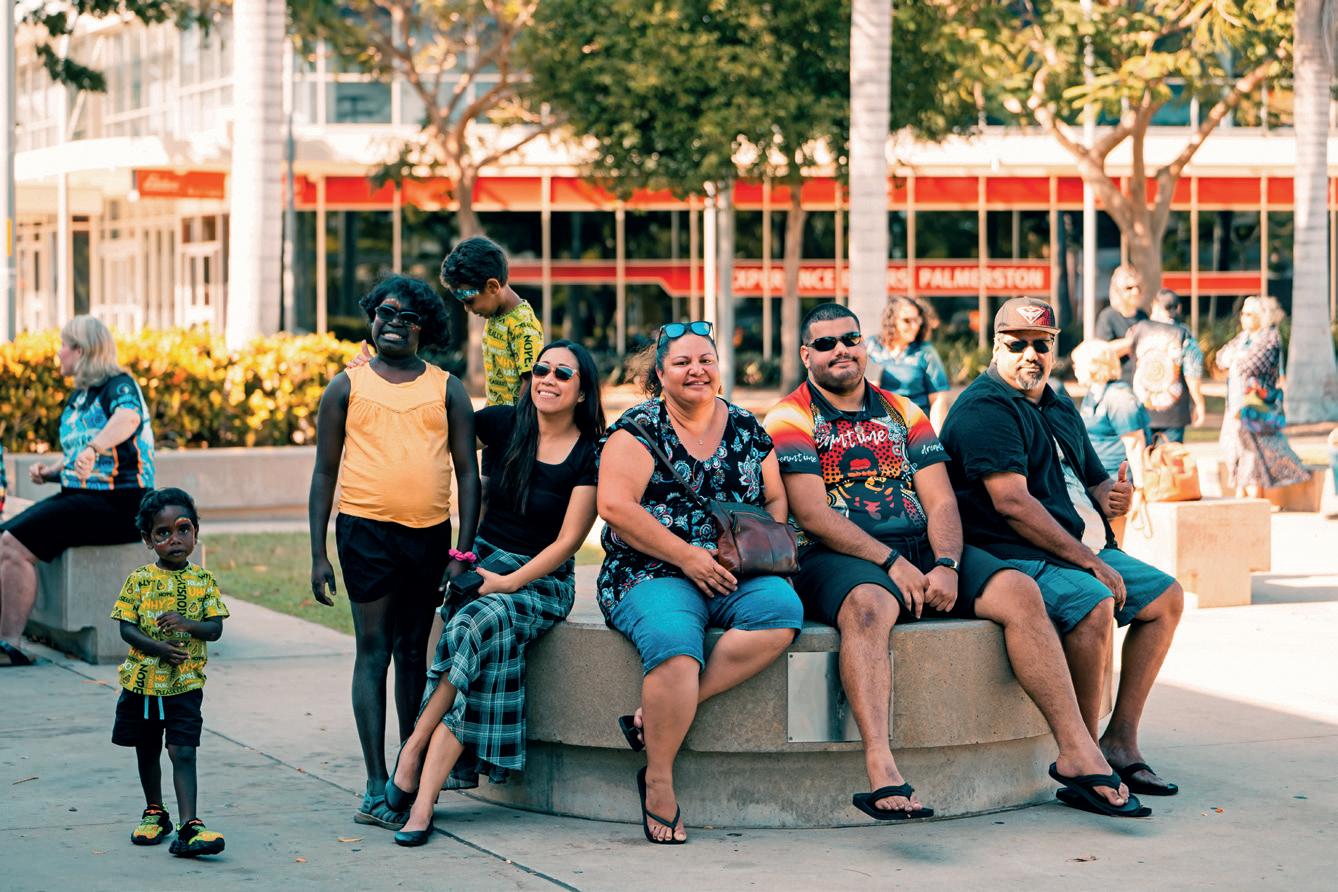
the design and layout of the CBD to help drive visitation and support businesses. Through activating the city spaces, we hope to increase visitation and reduce safety issues.
10. HOW IS YOUR COUNCIL AD DRESSING CLIMATE CHANGE AND REACHING SUSTAINABILITY GOALS?
We have a sustainability strategy and one of our community outcomes is environmental sustainability. A few points we work towards include replacing all lighting with LED; ensuring all facilities and buildings have solar (and are consistently audited); delivering a free pre-cyclone clean up (hard rubbish) every year at no extra expense; providing free entry to our waste facility; and developing improvements to the facility to improve recycling.
11. WHAT IS AN EXCITING COMMUNITY PROGRAM OR INITIATIVE COUNCIL HAS COMING UP IN THE FUTURE, OR ALREADY UNDERWAY?
Our extensive programs and events guide aims to activate the Palmerston region including parks, lakes and CBD.
One of the larger events we run is
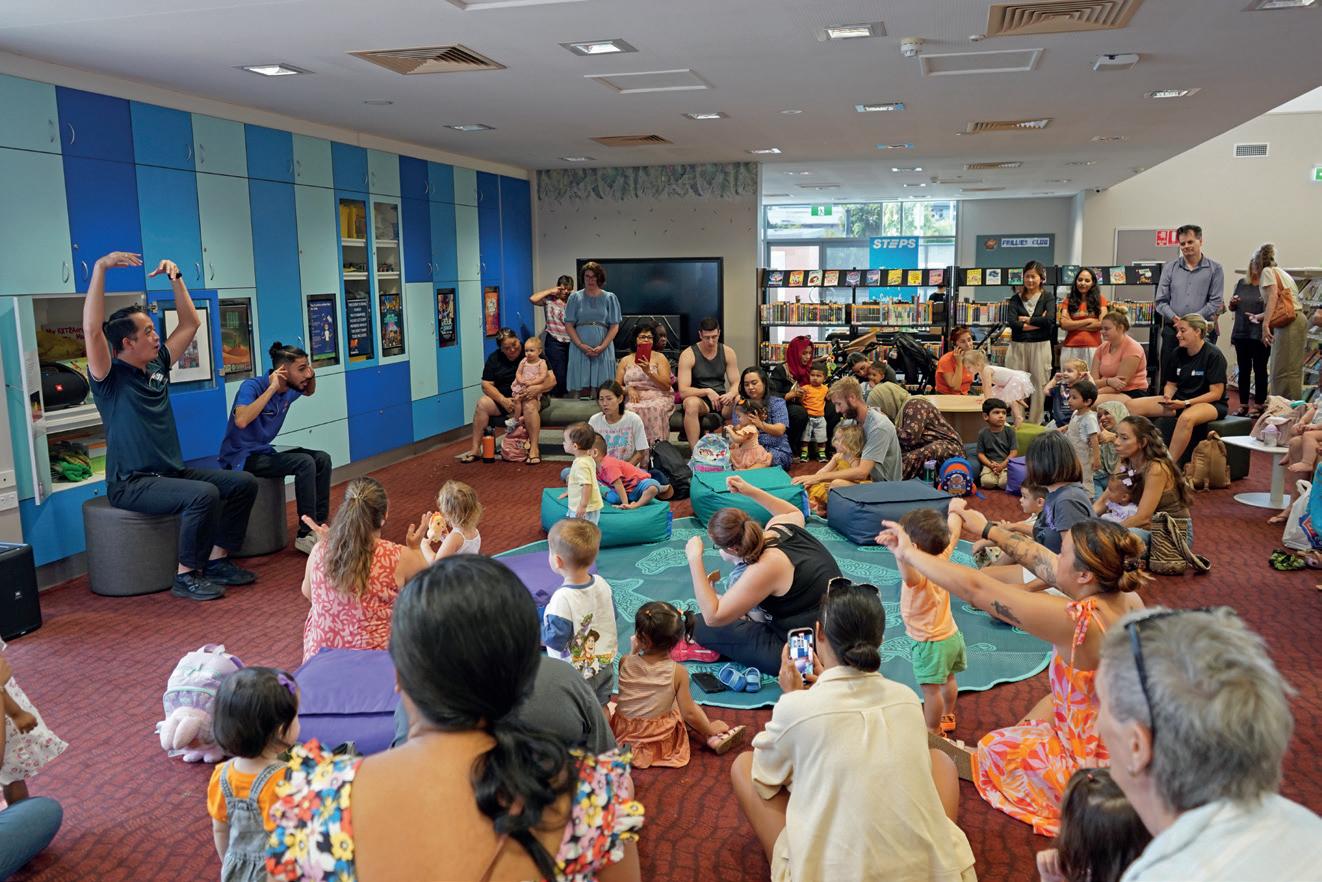
businesses and youth to celebrate culture, diversity, showcase talents, and encourage participation.
12. CAN YOU TELL US ABOUT AN INTERESTING URBAN DEVELOPMENT PROJECT IN THE REGION?
Our Zuccoli community hub is a staged development project that proposes a number of elements, including a dog park and public toilets (already completed), a pump track, walking trail, skate park, seating and BBQ areas, exercise area as well as a playground, library, community centre, event space and a garden area.
In 2025 the Pump Track will be completed with funding allocated in the current budget.
13. HOW IS YOUR COUNCIL EMBRACING DIGITISATION AND GROWING ITS TECHNOLOGICAL CAPABILITIES?
We’ve recently upgraded our website making more services accessible online –such as planning applications, payments, and customer service requests – enabling residents to engage with us quickly and conveniently. In addition to this, we are investing in data analytics to ensure we can continually optimise the website to improve outcomes and usability.
Internally, we’re modernising our IT infrastructure and going through the process of implementing an Enterprise Resource Program so we can internally process work more efficiently and effectively, which will have a huge impact on our staff and the community. Looking ahead, we’re exploring emerging technologies such as AI chat on our website, and automation on our phone services to enhance efficiency without removing the ‘people’ completely. We have a diverse community whose needs are broad, therefore we are committed to ensuring no one is left behind as we progress more towards digitisation.

• Over 1,000kg payload
• Towing rating of 3,500kg & 350kg tow ball mass rating
• Best-in-class tub space of 1,173L - fits an Australian pallet
• Integrated Trailer Brake Controller & Trailer Stability Assist
Contact you Kia Fleet Manager to find out more.

By Mayor Matt Burnett, President of the Australian Local Government Association
Following the reinstatement of the Albanese Labor government, we are calling on the Federal Government to respond to the Parliamentary inquiry into local government sustainability with significant funding reforms to support all councils.
We were delighted the views from councils across Australia were put forward at this inquiry last year. There is a clear evidence base for the need, and we want to see action and real commitments in the final report.
Financial sustainability is the biggest challenge facing our sector, with many councils at breaking point after years of delivering more local services and infrastructure with less funding.
Published earlier this year, the inquiry’s interim report reinforced the need for better long-term, formulabased funding.
We can’t afford for the Government to distract us by tinkering around the edges with formula changes, or let them re-cut the funding pie – we just need a bigger pie to provide a significant uplift for all council budgets.
It was fantastic to see councils support the national ‘Put Our Communities First’ federal election campaign in April, calling for the funding we all need to build better communities.
Across Australia, we collectively advocated for an additional $3.5 billion in funding that would return us to one per cent of national taxation revenue, and
highlighted that national priorities need local solutions.
The percentage of national taxation collected by councils has recently fallen to a 15-year low, so the untied, formula-based funding we receive from the Government is more important than ever.
I look forward to working with the new Government – including reappointed, Ministers Catherine King and Kristy McBain – on increasing untied, formula-based funding to facilitate more affordable housing, help reduce the national road toll and adapt to our changing climate.

We will work with Minister McBain in her new portfolio as Minister for Emergency Management on how the capability and capacity of local governments before, during and after emergencies can be funded and supported. Councils support our communities in so many ways during emergencies, and there is a need to see funds flow towards emergency preparation in a common-sense way.
While the election may be over, our national fight continues. I urge all councils to keep engaging with their local MPs and Senators – including those
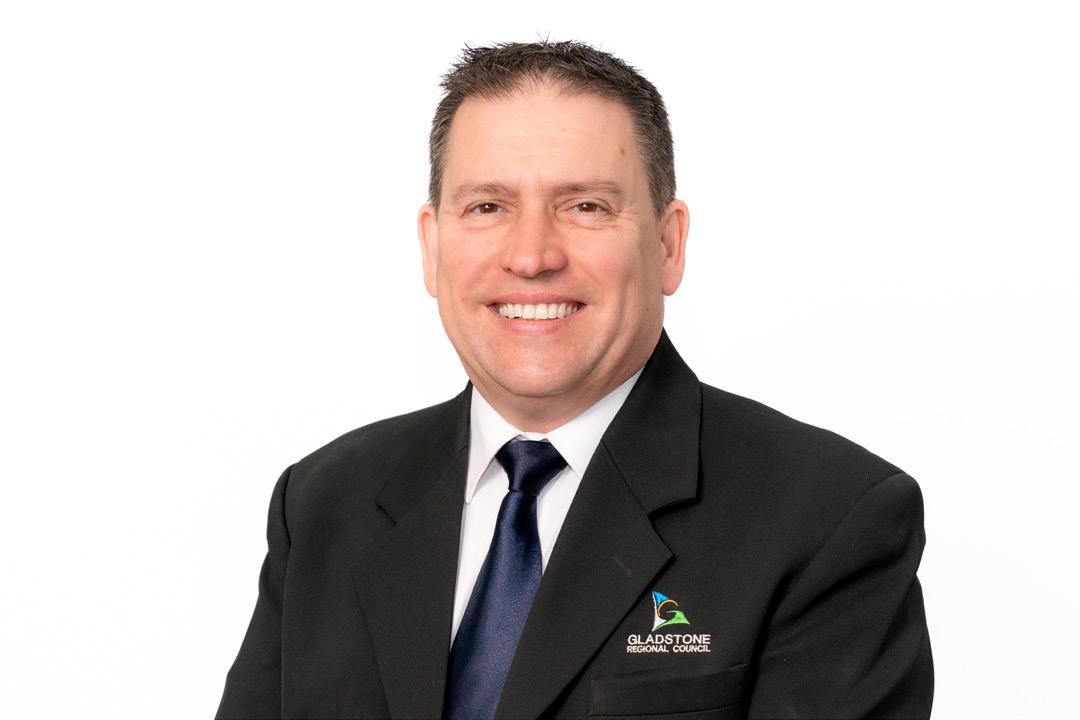
Mayor Matt Burnett is the President of the Australian Local Government Association, the national voice of local government, representing 537 councils across the country.
recently elected to Parliament – about the need for fair and sustainable funding to build better communities.
I am excited to welcome more than 1000 Mayors, Shire Presidents and council leaders to Canberra this month as we countdown to our 31st National General Assembly.
We have assembled an exciting line-up of high-profile guest speakers, hosts and panellists for this year’s event from 24-27 June at the National Convention Centre with the theme of ‘National Priorities Need Local Solutions’.
I encourage you to stay for the final day on Friday 27 June, where we’ll be inviting newly-elected federal Ministers to outline their plans for working with local government. This session will be hosted by David Speers from ABC Insiders to create insightful discussions between delegates and Ministers.
This will be a memorable morning, so please ensure you stay for the whole week, as it will be highly beneficial to report back to your councils and communities.
This year, we have also received a record number of NGA motions submitted by councils, and I’m looking forward to this robust discussion and debate.
I can’t wait to be in Canberra, and thank you for supporting the biggest annual gathering of local government leaders in Australia.
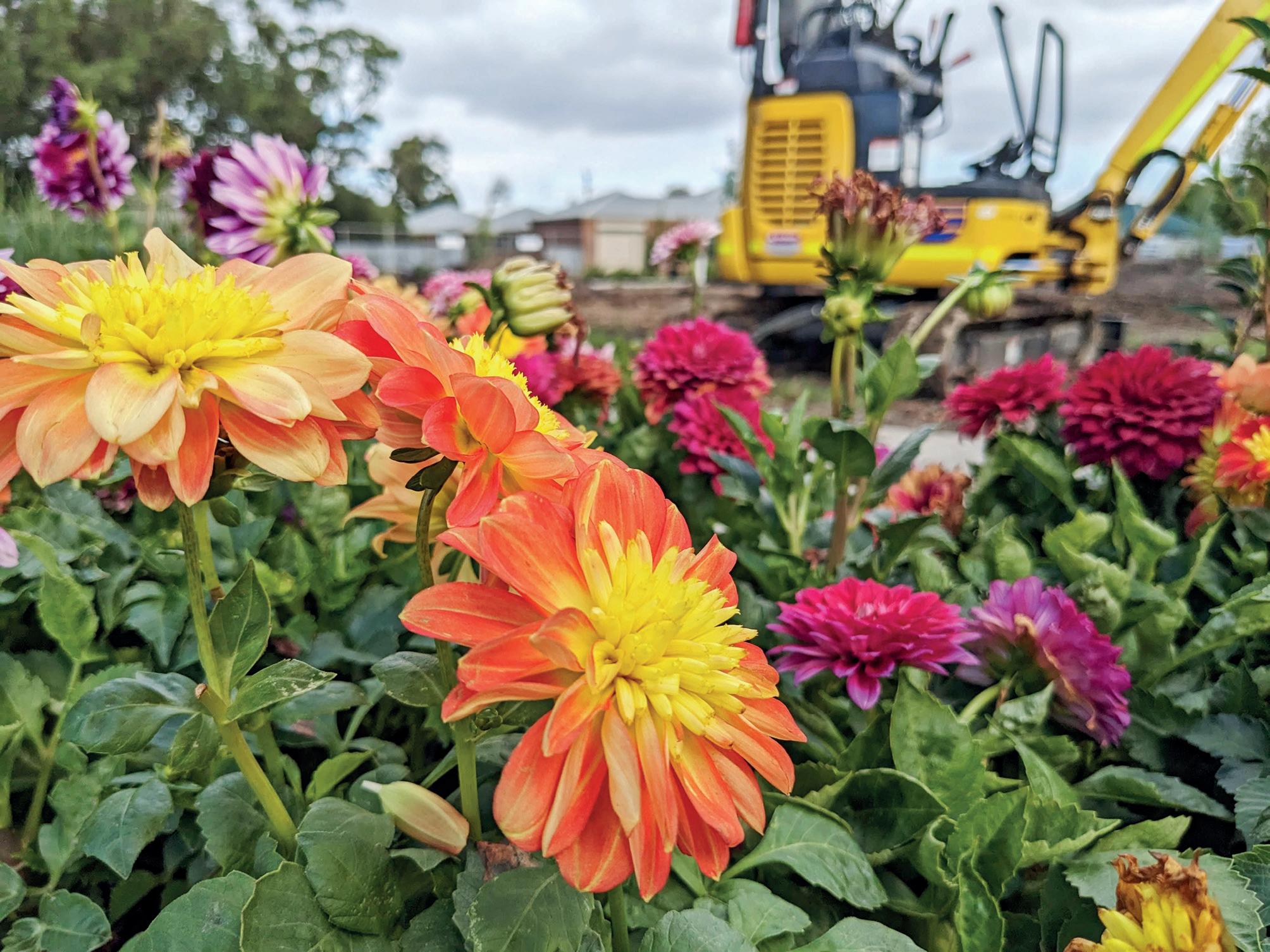
Following a record-breaking capital works expenditure of more than $40 million by Baw Baw Shire Council (BBSC) in the 2023/24 financial year, the delivery of projects has shown no signs of slowing down. BBSC’s 2024/25 Capital Works Program boasts over 156 different projects that are either complete or currently in progress.
BBSC’s Infrastructure Delivery and Major Projects team continue to deliver record-breaking projects for the residents of Baw Baw Shire.
The Warragul Leisure Centre Stadium Expansion (at just over $12 million, making it BBSC’s largest recreational project delivered to date) and the Bellbird Park East Pavilion (at just under $5 million) were among the works completed early in the financial year.
Baw Baw Shire is one of the five fastestgrowing peri-urban regions in Victoria.
The Warragul Leisure Centre Stadium Expansion, which officially opened on 28 July 2024, provides a much-needed
recreational facility for the rapidly growing Baw Baw Shire community.
This major project included the construction of two new indoor courts, spectator seating, a lounge viewing area, a new café and kitchen, a referee change room, a first aid room, storage facilities, changing rooms, and improved pedestrian and parking access links. These new facilities will serve Baw Baw’s local sporting clubs, particularly basketball, with more Baw Baw Shire residents participating in basketball over any other sport.
The expansion of the centre includes an upper floor that has been thoughtfully designed to support future growth. While currently unoccupied, this space provides a valuable opportunity for a
future fit-out, ensuring the building is well-prepared to adapt as new needs arise.
The expansion was built by Kubale Constructions, who began early works in March 2022. Early works included earthworks, drain installation, asbestos abatement and initial civil works that were needed before major construction commenced in 2023.
Mid-way through construction, new challenges were identified with new fire rating requirements (primarily insulation and substrate) and the additional requirement of a lift to allow the site occupancy to be set at 400 people. BBSC’s Senior Project Manager, Matthew Robinson, expertly managed these new requirements to ensure that
the project still opened to the public on time.
This project was delivered by Baw Baw Shire Council in conjunction with the Victorian Government, who contributed $6 million towards the project.
Following its official opening on 11 August 2024, the new multi-use pavilion at Bellbird Park East, Drouin provides modern facilities to soccer, hockey, and cricket players, local schools, and the wider community. The pavilion is home to the following sporting groups: the West Gippsland Hockey Association, the Drouin Cricket Club, and the Drouin Dragons Soccer Club.
The new pavilion is also well-equipped to hold a variety of community events due to the commercial kitchen facilities, flexible room configurations, audiovisual equipment, multiple change rooms, storage spaces, first aid room, office/meeting room, two canteens and drop-off zone. The building has also been designed to be female-friendly, inclusive, and fully accessible.
BBSC’s Community Hub Strategy identified a lack of community spaces fit for meetings and events, particularly in Drouin. To address this, there was a strong focus on ensuring the pavilion was designed for multi-use from the start. The pavilion was designed to deliver priority functions identified from community consultation, including bookable meeting rooms and a large space with a commercial kitchen. The pavilion is bookable by both sporting clubs and community groups through BBSC’s online booking system.
BBSC consulted with several user groups, such as educational organisations (including schools), social
groups, and a local church. Through consultation, the Warragul Community House were keen to offer a range of social, lifestyle, and educational programs from the new pavilion, and the YMCA were also eager to expand their services at Bellbird Park East through school holiday programs and group fitness programs, such as pilates and yoga.
This major project was delivered in partnership with the Victorian Government under the Growing Suburbs Fund, with the Victorian Government contributing $2 million and BBSC contributing $2.97 million. The project was constructed by Gippsland-based Langden Constructions.
There are many more exciting capital works projects currently in progress. One noteworthy project is the Rollo Street Park in Yarragon (previously the old Yarragon primary school site until 2013). This site is currently undergoing a $1.77 million redevelopment and will include the planting of more than 60 advanced trees, the creation of a walking path, seating, drinking fountain and bike racks, the establishment of a rain garden, new car parking spaces, improved drainage, and new bollards and fencing.
This project will transform the vacant land into a valuable open space catering to community events, social gatherings and informal recreation. The majority of the work was completed by Sustainable Landscaping in late 2024 and early 2025, with future works (including arbour/ shelter, signage, lighting and artwork) still to be delivered later this year pending further design and consultation with the Yarragon community. The park
is expected to open in mid-2025 before these final upgrades are complete.
The Rollo Street Park project has been managed by BBSC’s Senior Project Manager, Matthew Robinson, and by the contractors who encountered initial wet weather conditions, followed by a prolonged dry period that necessitated daily dust suppression.
Following public consultation and an exemption from Geographic Names Victoria, BBSC resolved to name the site ‘Angela Malacarne Park’ in recognition of the significant work of Mrs Angela Malacarne, a Yarragon Primary School teacher of almost 40 years.
This project is being delivered by Baw Baw Shire Council, with a $235,000 contribution, and the Victorian Government, who are contributing $1.5 million towards the project under the Growing Suburbs Fund.
With a project value of $35 million, the new Library and Learning Centre is at the heart of the Baw Baw Culture and Connection Precinct in Warragul. The new Library and Learning Centre is the crown jewel of BBSC’s capital works program over the coming years. It is the most ambitious and largest project in Council’s history, and will provide vital social, educational and artistic infrastructure for the growing Baw Baw community for generations to come.
The multi-level facility is expected to contain a new community library (including a maker’s space and video gaming, reading and study areas), community meeting rooms, creative and cultural spaces, an exhibition space, consulting rooms, co-working spaces, a public terrace, and a pedestrian connection link to the existing West Gippsland Arts Centre. With the design 90 per cent complete, the procurement process for the new building is underway, and construction is scheduled to commence in late 2025.

BBSC has created a dedicated Special Projects Team for this project due to its size and complexity. This team is made up of Marc Gore, Coordinator Special Projects, Tom Hutton, Project Manager, and Sanjaya Perera, Graduate Engineer. The team has already worked through several challenges in relation to the project’s planned scope, logistics and operations.
Council is grateful for the $4.5 million contribution to this project from the Victorian Government via a combination of its Growing Suburbs Fund and Living Libraries Fund, and for the $14.5 million contribution from the federal Growing Regions Program.
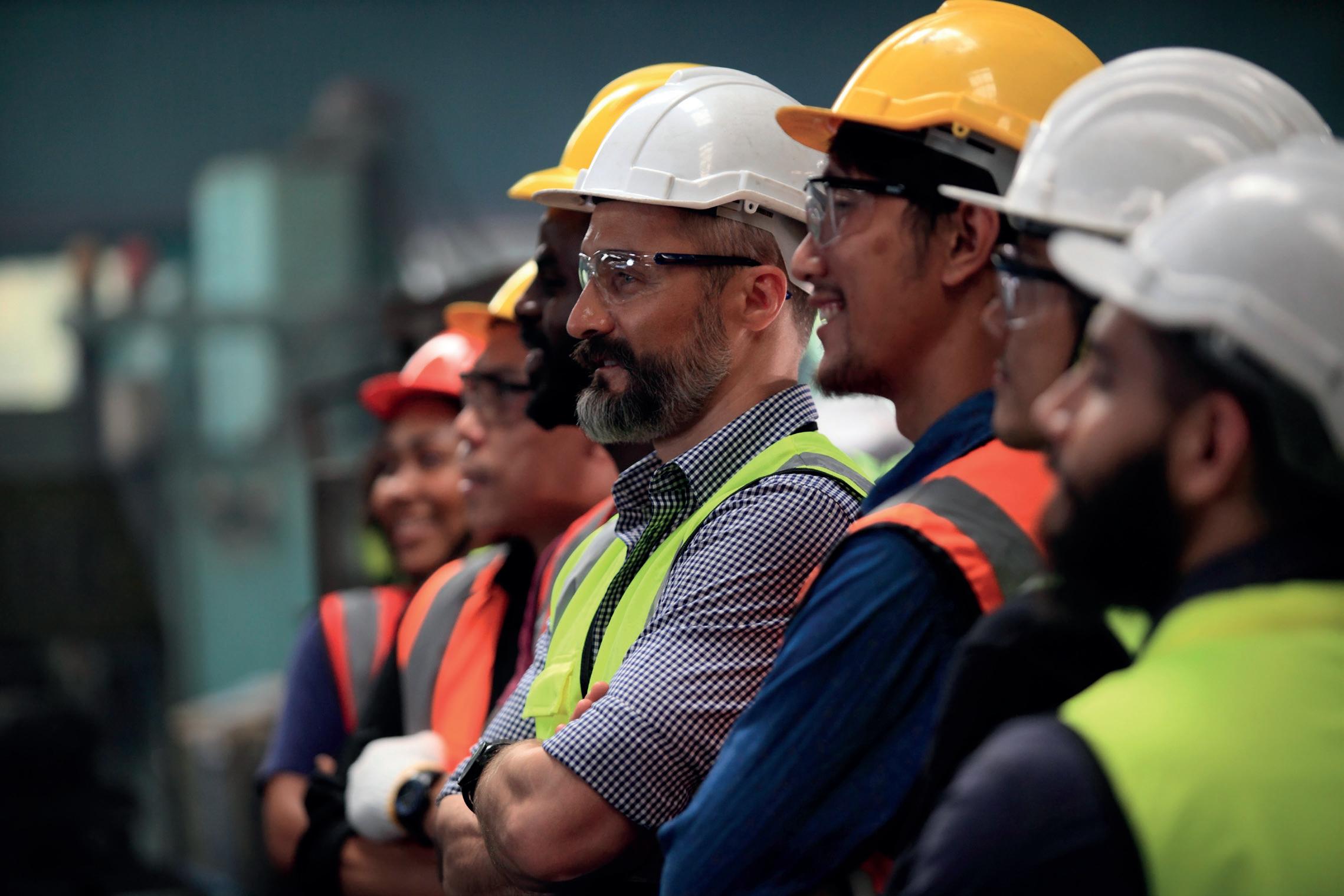
sittinan/stock.adobe.com
All teams need a strong leader. At a time when employee engagement is at historic lows, local governments must take action to better engage managers –to ensure the retention and productivity of not just team leaders, but of all staff.
Employee engagement refers to the degree to which workers are connected, committed and enthusiastic about their work and the organisation they work for.
In the annual State of the Global Workforce (SOGW) report, undertaken by Gallup, employees across the world were found to be less engaged at work than they were the previous year, with 23 per cent of workers reporting feeling engaged in 2023 and only 21 per cent reporting the same in 2024.
In the past 12 years of SOGW reports, employee engagement has fallen only twice, with the previous time being an
equal two per cent drop during the year of the COVID-19 pandemic.
When employees are disengaged from their work, they are less productive and more likely to be absent. As a result, even a small percentage change in engagement can have enormous impacts on economies, with Gallup estimating that the total reduction in productivity over 2023-2024 was equal to a loss of $682 billion.
Of all the categories of workers reflected in the SOGW report, managers experienced the most significant decline
in engagement, showing a reduction from 30 per cent to 27 per cent.
In particular, young managers (those 35 and under) experienced a drop of five per cent, while female managers saw a drop of seven per cent.
In a post-pandemic era, organisations of all kinds have experienced significant new challenges and obstacles. From shifts in the workforce, restructuring of departments and teams, rising costs, interrupted supply chains, new expectations from both workers and customers, and rapid advancements in digital and AI technologies, the
average organisation has been disrupted at every level.
Managers are at the forefront of it all. At a time when executives seem further from their employees than ever, managers and team leaders are required to hold down the fort and keep workers engaged and focused in the workplace.
The SOGW report outlines a significant relationship between the engagement of employees and that of their managers, going so far as to say that 70 per cent of an individual’s engagement is attributable to their manager.
If this trend of falling manager engagement continues, the repercussions for the wider workforce could be dire.
While employee engagement fell globally on average, in Australia and New Zealand the number of employees who felt engaged by their workplace actually rose from 22 per cent to 23 per cent. Despite this small increase, the data shows that 65 per cent of workers in the ANZ region were not engaged with their work and 12 per cent reported being actively disengaged.
In addition, while engagement rose, employee life evaluations – a measure of how workers feel about their lives overall – fell harshly. The number of workers reporting that their lives were ‘thriving’ dropped from 60 to 56 per cent.
This is representative of a historic and continued drop over the past several years.
While still high by global standards, the Australia and New Zealand region is now performing far below its historical average. Based on respondents’ dissatisfaction with their quality of life and income, the SOGW report has
and inflation are playing a significant role in these results.
Additionally, since employees spend most of their lives working, it is also expected that a major contributing factor is how engaged employees are at work.
Half of employees who are engaged report that they are thriving in life overall, compared with only a third of employees who are not engaged.
Those who report being engaged are also less likely to say that they experience daily negative emotions like stress, anger or sadness. When considered together, the decline in manager engagement and employee life evaluation paint a clear picture of a deteriorating workplace environment.
On the surface, the outlook is bleak. The data shows a global and local workforce fallen into a steep decline. But the SOGW data shows that there is an opportunity for a major productivity boom if organisations seize the moment and take serious actions to boost engagement in their workplaces.
To turn the corner on this global issue, Gallup has created three major actions for leaders to take:
1. Ensure all managers receive training
According to Gallup’s data, only 44 per cent of managers say that they have received management training.
This represents a major opportunity for organisations to boost the productivity and effectiveness of their managers by providing basic role training.
Half as many managers who receive training are actively disengaged as those who are not trained, suggesting that even simple training in the responsibilities of a role can stop a manager from feeling overwhelmed or
2. Teach managers effective coaching techniques
Some managers are passionate about supporting individuals and guiding teams. But that is not often the case. Many managers enter their roles by being competent in their respective field, but that doesn’t always equal effective management skills.
Luckily, effective coaching strategies can be taught. Gallup found that a manager who participated in a training course focused on management best practices experienced up to 22 per cent higher engagement than those without such training.
Further, the teams led by those participants saw engagement rise by up to 18 per cent, and manager performance metrics improved between 20 to 28 per cent.
3. Increase manager wellbeing through ongoing development
Gallup reports that managers who receive training improve their ‘thriving’ levels from 28 per cent to 34 per cent. However, if managers have training and someone in their workplace actively encourages their development, manager thriving increases even further to 50 per cent.
This wellbeing improvement can have a flow-on effect, wherein engaged and well-trained managers have a more positive impact on their teams.
Active investment in manager engagement and wellbeing could be the turning point for the steady decline of workplace productivity. By investing in training and redefining the expectations and support for the manager role, organisations can create workplaces that help managers thrive and, by extension, boost the productivity and engagement of their


Accelerate your renewable energy journey with Origin Zero’s Solar Power Purchase Agreements (PPAs) with no upfront cost. We’ll install, own, maintain, and monitor a solar system on your premises. You’ll gain access to solar energy at a reduced, fixed rate - helping you unlock savings for your business from day one.


The town of Echuca on the banks of the Murray River. Image: 169169/stock.adobe.com
Council magazine sits down with Pauline Gordon, Campaspe Shire Council CEO, to learn more about local government operations, community engagement, and the unique challenges faced by regional councils.
Located about 180 kilometres north of Melbourne, Campaspe Shire Council is home to more than 37,000 residents spread across 4500 square kilometres in the communities of Echuca, Kyabram, Rochester, and more.
Known predominantly for its contributions to the agriculture and food processing sectors, the region has a rich history, cultural heritage and natural assets.
Such an expansive region can also present unique challenges. Enter, Pauline Gordon.
As the Chief Executive Officer of Campaspe Shire Council, Gordon is helping to ensure that members of the local community can benefit from Council investment and decisions for generations to come.
With close to 30 years’ experience in local government leadership experience
across a variety of Victorian and Queensland councils, Gordon is first and fore-most passionate about community, and upholds local government’s ambition to make a real difference in people’s lives.
She believes local communities deserve to be represented by those who share the same vision and values for the future prosperity of the region.
“We have to have the ability to make a real difference locally with our people,” Gordon said.
“We’re a community of communities. The people who work in local government are genuinely committed to servicing our communities.
“Regional and rural people, especially those in this local government area, go out of their way to help you. Their hospitality is second to none, that’s the effort and care that we want to give back.”
Gordon’s tenure at Campaspe Shire Council began in October 2022, just as the region was being swamped by severe flooding. Rochester, as well as parts of Echuca and surrounding areas were seriously affected.
Gordon was one of many volunteers (prior to the official commencement of her full-time role) that helped the community during the severe weather event. Her assistance was focused on supporting the Council’s executive team when they were short-staffed, seeing it as a necessary action to assist the community and organisation during the unfolding emergency situation.
Gordon said that Council’s flood recovery efforts continue to this day.
“We’re more than two years on and we’ve still got houses that are vacant and people that are displaced,” she said.
“How can we support the community in moving to some new level of normality, so that they can get on with their lives in another way, while knowing that such an event could happen again?”
As a result, the Council has launched a number of flood recovery initiatives. This includes developing flood studies with catchment management authorities, working to mitigate future flood risks, and advocating for mental health support for flood-affected communities.
The former Queensland Manager of the Year for local government believes situations like this show the need for resilience, agility, and adaptability in local government. All cornerstones of Gordon’s career so far, and aspects she’s hoping to implement into Campaspe Shire Council’s operations.
Another aspect that Gordon believes could and should be improved is the representation of female leaders in the local government space.
It’s an essential component of delivering optimal services for residents within the Campaspe Shire, with about a 50-50 split between males and females in the Council’s management team.
“I don’t know any other organisation with the same level of diversity on its executive team that we have,” Gordon said.
“We all have different skills and abilities, which is the beauty of diversity within local government.”
Gordon believes female team members need to be encouraged to not only participate, but to meaningfully contribute. This may help to ensure that decisions incorporate a variety of insights and perspectives to reflect what’s best for the community.
“I think that females sometimes suffer from imposter syndrome and might potentially think they have to do
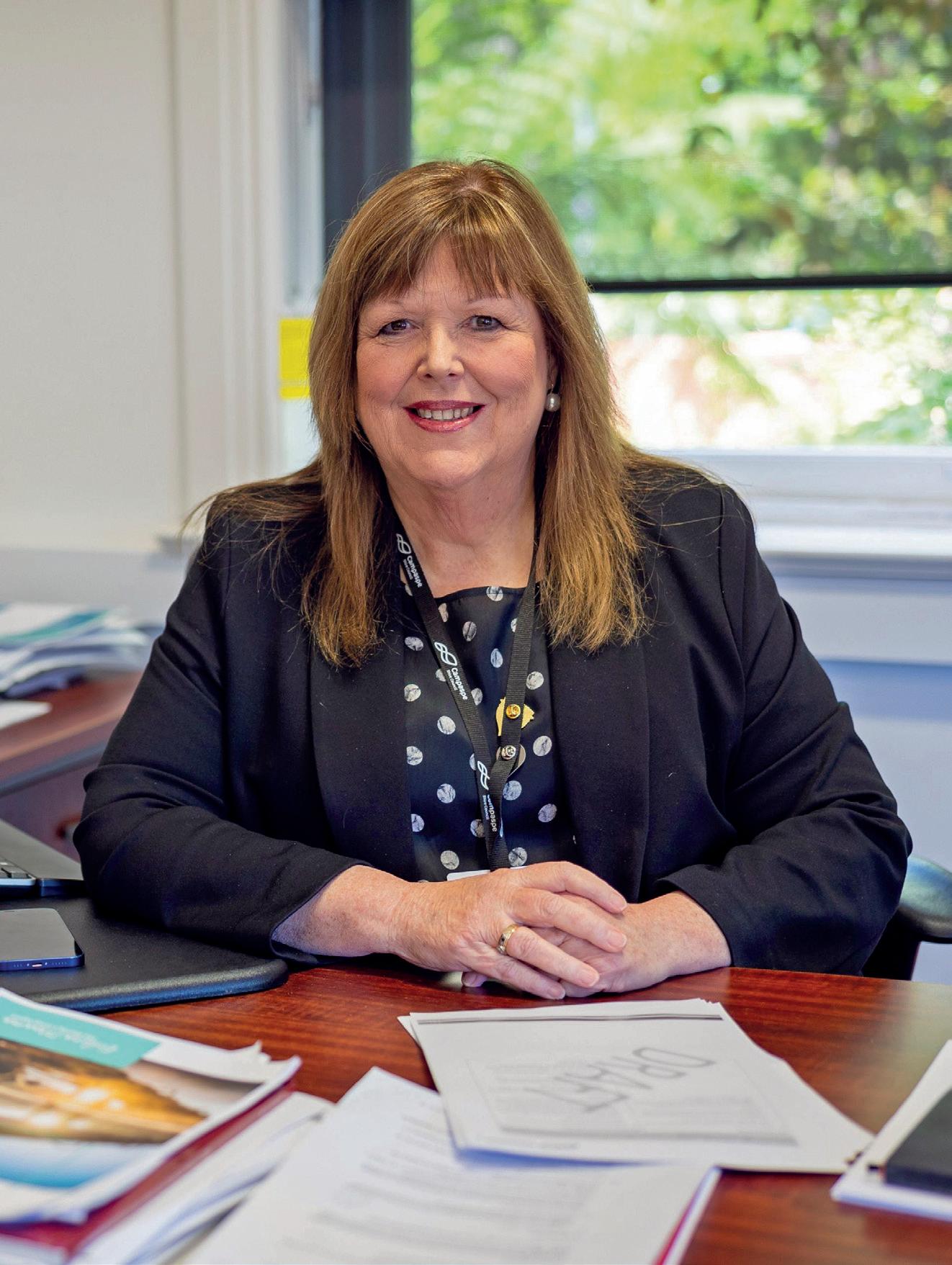
Pauline Gordon, Campaspe Shire Council CEO. Image: Murray Regional Tourism
up that can make a difference. That’s what made me believe in myself, to be courageous and take that next step.”
When it comes to the future, Gordon said the major focus will be catering for growth. Not only in the community, but also what’s expected and required from local government services.

the infrastructure needs for a new population, focusing on workforce housing, and considering affordable and social housing options.”
A number of major projects are set to support this mission, including a new council plan development, the first Citizens Panel to support council planning, as well as the Victoria Park Echuca redevelopment, an $11.4 million project.
Another contributing factor to the growth and overall prosperity of the region has been the strong tourism industry. Gordon says efforts so far paint a positive picture for the future of Campaspe Shire.
“We’re very reliant on tourism and we’re constantly competing for tourists to come and spend money in our towns,” she said.
“We just made National Geographic’s top 25 destinations for natural tourism. We also have a fantastic climate which draws visitors to our townships and events across Campaspe.”
With growth comes a number of challenges, but Campaspe Shire Council’s CEO says these are being viewed only as opportunities to expand and improve its services for the community.







Women remain underrepresented in local government across Australia, having just broken the 40 per cent mark of councillor positions nationwide. For those women who do get elected, retention remains a challenge.
The Australian Local Government Women’s Association (ALGWA), formed in 1951 to support and encourage women’s participation in Local Government, both as elected members and as council officers, is working to shift that through its Peer Mentorship Program.
National ALGWA President, Mayor Kylie Spears, said, “As the peak body for women in local government, ALGWA is the strong, collective voice for local democracy.
“It is the preeminent leader in a community of dynamic and passionate women in local government and as such is proud to deliver the Peer Mentoring Program as a part of the Women in Public Office (WIPO) initiative – a five-year, federally funded collaboration led by Women for Election, with Deakin University, campaign expert Ruth McGowan and ALGWA all playing critical roles.“
The program equips aspiring female candidates with the skills, confidence and support they need to campaign successfully – and stay the course once elected.
Program lead Kathleen Bourne has seen firsthand how powerful that support can be. More than just a training initiative, the program connects women with experienced mentors and peer networks, helping to build both knowledge and resilience.
“It’s about helping them feel ready to step up,” Bourne says.
While training helps women prepare to campaign, ALGWA’s Peer Mentorship Program picks up from there, creating a space for prospective candidates to connect, share experiences, and develop the soft skills and resilience required to campaign successfully.
“This is peer mentoring,” Bourne said.
“It’s not one-on-one mentoring, which ALGWA has offered successfully in the past at state branch level and continues to offer for first-term councillors, as exemplified in Victoria following last years’ elections. The peer-mentoring is very much focused on campaigns, for candidates who want to run for election.”
“One-on-one mentoring has always been a core role for ALGWA and our Peer Mentoring program is an extension of this,” Spears added.
Rather than being matched with a single mentor, participants join what ALGWA calls Mentoring Circles. Each circle includes between five and fifteen women and is led by a ‘master mentor’ – a woman with significant campaign experience, who guides the
group through weekly sessions held over a four-week period.
“The first session is really about introductions,” said Bourne.
“It’s important that the women get to know each other, because they’re going to be sharing this experience together. Often, they’ll stay in touch afterwards. They set up WhatsApp groups. It’s a shared experience – they’re in the trenches together.”
These mentoring circles provide not just training and insight, but community. As Bourne puts it; “Until you’ve campaigned, you don’t actually know what it entails.”
For many women, particularly those running in rural or regional areas, it can be an isolating experience as well.
ALGWA’s online delivery format is a deliberate and vital feature.
“I live regionally,” said Bourne, “the fact that this is online means that women anywhere can access it. We’ve had First Nations women join from remote communities, walking outside on their phones just to get signal. That’s how much they want to be part of this program.”
The content of the sessions span everything from campaign messaging and personal safety to social media use and voter engagement.


“We cover how to promote yourself online, how to stay safe, and just generally how to manage a campaign,” Bourne explained.
“One of our mentors in Tasmania shared tips like, in rural areas, people don’t answer their front door – go to the back. Check for dogs. These are things you only learn by doing.”
Beyond practical advice, the real strength of the program lies in the emotional scaffolding it builds around its participants.
“Women are very good at selfdoubt or suffer from imposter syndrome,” Bourne said.
“They’ll question themselves even when they’re more than capable. Having a group of peers and a mentor who’ve been there before – that village to support you – is what helps them realise they can actually do this.”
She’s seen firsthand how a lack of confidence holds women back from even putting themselves forward.
“There was an article recently that said if a job has three selection criteria, a man with just one will apply anyway. But a woman with two won’t apply because she’s missing the third,” Bourne said.
“That’s why support programs like this matter. They give women the confidence to try.”
That confidence-building aspect is no accident. It’s built into the design. ALGWA surveys participants at the start and end of each cycle, measuring not just their satisfaction but how their confidence has changed.
“After the most recent cycle, 98 per cent of respondents said their confidence to run had increased,” said Bourne.
“That’s huge. That means they’re walking away from this program not only better informed but actually believing they can do it.”
The benefits extend well beyond the candidate herself.
In many cases, participants form close bonds with their circle and continue offering support throughout their campaigns – and in some cases, into their terms as elected officials.
Some end up working together on preference flows or campaign strategy, while others simply remain connected as part of a growing network of women with political aspirations.
“There are some women who’ve joined even though they don’t plan to run in the next election,” Bourne said.
“We have one woman in the federal cycle who told us, ‘I’m looking ahead to 2028’, but she wants to start learning now. She’ll stay in touch with her group and will have that support all the way through.
“When I was a candidate years ago, nothing like this existed. You felt very alone. There was no group to say, ‘This happened to me too’, or ‘Here’s how I dealt with that situation’. Now, these women can turn to each other, learn from each other, and share the wins and the hard days.”
ALGWA deliberately matches participants based not only on the level of government they’re targeting, but also on geography.
“Campaigning is very different in a metro environment compared to a regional one.
“We try to place people accordingly, so the discussions are relevant and useful.”
Mentors, too, are drawn from across the political spectrum and from different tiers of government. What unites them is lived experience and a willingness to give back.
“The feedback from our mentors has been amazing,” said Bourne.
“They often say, ‘When can I do this again?’ They love being part of the journey, and despite being busy women themselves, they make the time to turn up every week as they found the sessions such a rewarding part of their lives.
That passion has translated into strong demand.
“When we kicked off our federalfocused cycle a few months ago in February, it was booked out in a matter of days,” Bourne said.
“We even had a waiting list, just in case people dropped out – which they rarely do. It’s too valuable.”
Importantly, the program isn’t just about preparing women for local government. It’s part of a broader pipeline to increase female representation across all levels of elected office.
“We don’t delineate between local, state or federal,” Bourne said.
“Our only real consideration is metro versus regional, just to ensure the campaign context is right.”
The ultimate aim isn’t just diversity –it’s quality.
“When I applied for this job, I said to Kylie Spears, we need to increase the pool of good candidates.
“That gives constituents better people to choose from, which in turn raises the bar for everyone. Instead of someone getting elected cycle after cycle by default, we create real competition. That’s better for democracy.”
Bourne is also clear that the program isn’t only for those ready to step up now or as a candidate themselves. In fact, ALGWA actively encourages women to start early and also encourages women who want to support another’s campaign in various volunteer roles.
“It takes time to build confidence, to get your name and face out there, and to establish a network of volunteers. The earlier you start, the better prepared you’ll be.”
For women already serving in elected roles, the call is equally clear: become the tap on the shoulder. Identify potential. Encourage someone else to step forward. That’s how the movement grows.
“We really want elected women to see themselves as part of the pipeline,” President Spears said.
“You might already be on council, but who else do you know who should be? Tell her. Share the link. Be that person who says, ‘I think you’d be great at this’.”
It’s a simple gesture – but one that, as both women point out, can make all the difference.
Because sometimes, all it takes is someone else to say, ‘You’ve got this.’
In the circles that make up ALGWA’s Peer Mentorship Program, that sentiment is echoed every week, by women supporting each other, lifting each other up, and quietly reshaping the face of Australian politics – one candidate at a time.
To find out more about ALGWA’s mentorship program, visit www.algwa.net.au






We’re Creating the Future of Water for our people and communities, for generations to come


By WALGA President, Karen Chappel AM JP
As the authoritative voice and trusted partner for Western Australian local government, it was critical that the WA Local Government Association (WALGA) was at the forefront of advocacy for the 2025 State Election.
The 2025 State Election presented an opportunity for the incoming government to address the challenges facing Western Australia both now and into the future.
Through our 2025 State Election Priorities ‘The West at its Best‘ and extensive advocacy, WALGA presented initiatives and solutions to keep the state running at its best in the areas of climate resilience, emergency management, low carbon, safer roads, connected and inclusive communities, efficient regulation, local planning, workforce development and local government reform. The platform not only conveyed priorities leading up to the election, but also acts as a guide for WALGA’s advocacy over the next four years.
With significant advocacy measures undertaken, highlighting WALGA’s key policy priorities across a range of media, our message was clear – we wanted to see the West at its Best.
Western Australian local governments were also encouraged to use WALGA’s policy platform to support their individual asks, conveying a united voice across WA.
WALGA generated significant media interest and fostered public engagement through collaboration with our 139 member local governments.
WA local governments provide critical outcomes every day, including delivering billions of dollars’ worth of services, while employing thousands of Western Australians to serve our communities. Using examples and stories of the areas in which local governments were ‘under stress’ highlighted how meeting WALGA’s advocacy asks and changes to
policy or funding would achieve a state where Western Australia was ‘at its Best.’ These extensive advocacy efforts were picked up by mainstream media outlets including The West Australian, showcasing WALGA’s priorities to the general public, and amplifying our campaign efforts.
WALGA also undertook a comprehensive engagement strategy with meetings held with key ministers, candidates, and the Opposition parties – ensuring WALGA was able to reach and discuss important policy matters with political parties, their members and candidates.
This combined effort resulted in WALGA securing a record number of commitments towards important initiatives from the now re-elected State Government, aligned with the priorities outlined in The West at its Best, including:
• Expansion of the Regional Road Safety Program to local roads ($125 million)
• 23 new signalised crossing to replace warden-controlled children’s crossings ($17.7 million)
• Funding for six new Community Emergency Services Manager (CESM) positions ($3.5 million)
• Dedicated State Bushfire Mitigation Branch to undertake mitigation works on unallocated crown land, unmanaged reserves. Support local government to manage the risk on road verges and provide support during major incidents
• Commitment to double Perth’s tree canopy cover to 30 per cent by 2040, a new urban canopy growth program ($10 million) and ‘treebates’

•

• new and refurbished social housing, additional GROH homes and stamp duty relief for first homebuyers ($145 million)
• Expansion of the PATS rebate by more than 50 per cent and expansion to eligible services to include dental services and allied health ($34 million)
• Range of infrastructure projects to improve community sport and recreation facilities across the state, including $30 million in additional funding for infrastructure upgrades to support women’s participation in sport
Following the success of WALGA’s 2025 State Election priorities campaign, we continued our efforts for the 2025 Federal Election. WALGA’s 2025 Federal Election Priorities leveraged the success of the State Election campaign, presenting a plan to build community resilience through strategic investments and policy reforms in critical areas such as community infrastructure, coastal management, emergency management, regional health, road safety, as well as telecommunications.
Through a consolidated approach, WALGA was able to use its influence, support and expertise to deliver better outcomes for WA local governments and their communities.
WALGA will continue to advocate on behalf of our 139 local government members and work collaboratively with Federal and State Governments to ensure the issues that matter the most to our local communities continue to be addressed.
We regularly support Councils, from ad-hoc ‘sounding board’ advice, through peer review of technical reports, to representation in the Land and Environment Court.

RECENT EXAMPLES
■ Assessment of health and amenity risks from industrial development
■ Amenity issues near to odour sources, including intensive farming and mangroves
■ The impact of road traffic emissions at childcare centres
■ Agricultural spray drift

More than 1000 mayors, shire presidents, councillors and local government leaders from across the nation will converge in Canberra for the 31st National General Assembly (NGA).
24-27 June at the National Convention
areas to discuss a range of issues and challenges. This year’s forum includes driving efficiency through technology,


Keynote speakers for the forum include leading social commentator and demographer Bernard Salt, National Rural Health Commissioner Professor Jenny May and road safety expert Kenn Beer.
All delegates are encouraged to stay for the final day on Friday 27 June, where well-known ABC political journalist David Speers will facilitate conversations with new and returned Ministers on their plans and ideas for working with local government.
This will be a valuable opportunity for councils to hear directly from Australia’s political leaders, and report back to their communities.
This year, there have been a record number of NGA motions submitted by councils, which will provide robust discussion and debate on the Wednesday and Thursday afternoons.
There will also be a large showcase of exhibitors and sponsor booths from local government suppliers, supporters and government agencies.
Tickets are still available for the 2025 NGA – hurry, book now www.nga25.com.au
Henry Anning, CEO of ResourceCo’s Energy Operations.

With millions of tonnes of waste being sent to landfill each year, local governments across the country are searching for sustainable solutions to decrease the growing piles.
The National Waste Report 2024 found over nine million tonnes of commercial and industrial waste was sent to landfill in Australia in the 2022/23 financial year, a number which will be causing concern for councils across the country in the face of a growing focus on sustainability.
ResourceCo’s landfill diversion and energy recovery services are playing a major part in assisting significant change for local governments across multiple states.
South-east Queensland recently received a major boost to its landfill diversion and energy recovery capacity, with the opening of ResourceCo’s new waste-to-fuel facility in Hemmant, Brisbane.
ResourceCo’s Energy CEO, Henry Anning, said the opening of the Hemmant facility was the culmination of a seven-year journey and was supported with funding from the Queensland Government’s Resource Recovery Industry Development Program.
“Queensland has the second lowest resource recovery rate in the country, ahead only of the Northern Territory,” Anning said.
“What that means is there’s a lot of waste still going to landfill in Queensland, and that was an opportunity, from an investment perspective, to invest in this sort of asset. It was around that time that Queensland introduced a landfill levy, which was another major factor in us deciding to undertake this project.
“We already had our facility in Adelaide, and then one opening in Sydney at the time, so for us, we were looking at ‘where should we build the
ResourceCo’s alternative fuel manufacturing capability is diverting material from landfills throughout QLD, NSW and SA.
next one?’ and South-east Queensland was a logical location.”
Anning explained that the facility is the first of its kind in Queensland and can divert 250,000 tonnes of waste away from landfill annually.
“All of our incoming waste would otherwise go to landfill. That’s what we target as feedstock,” Anning said.
“We achieve about a 95 per cent diversion rate from landfill. So, a
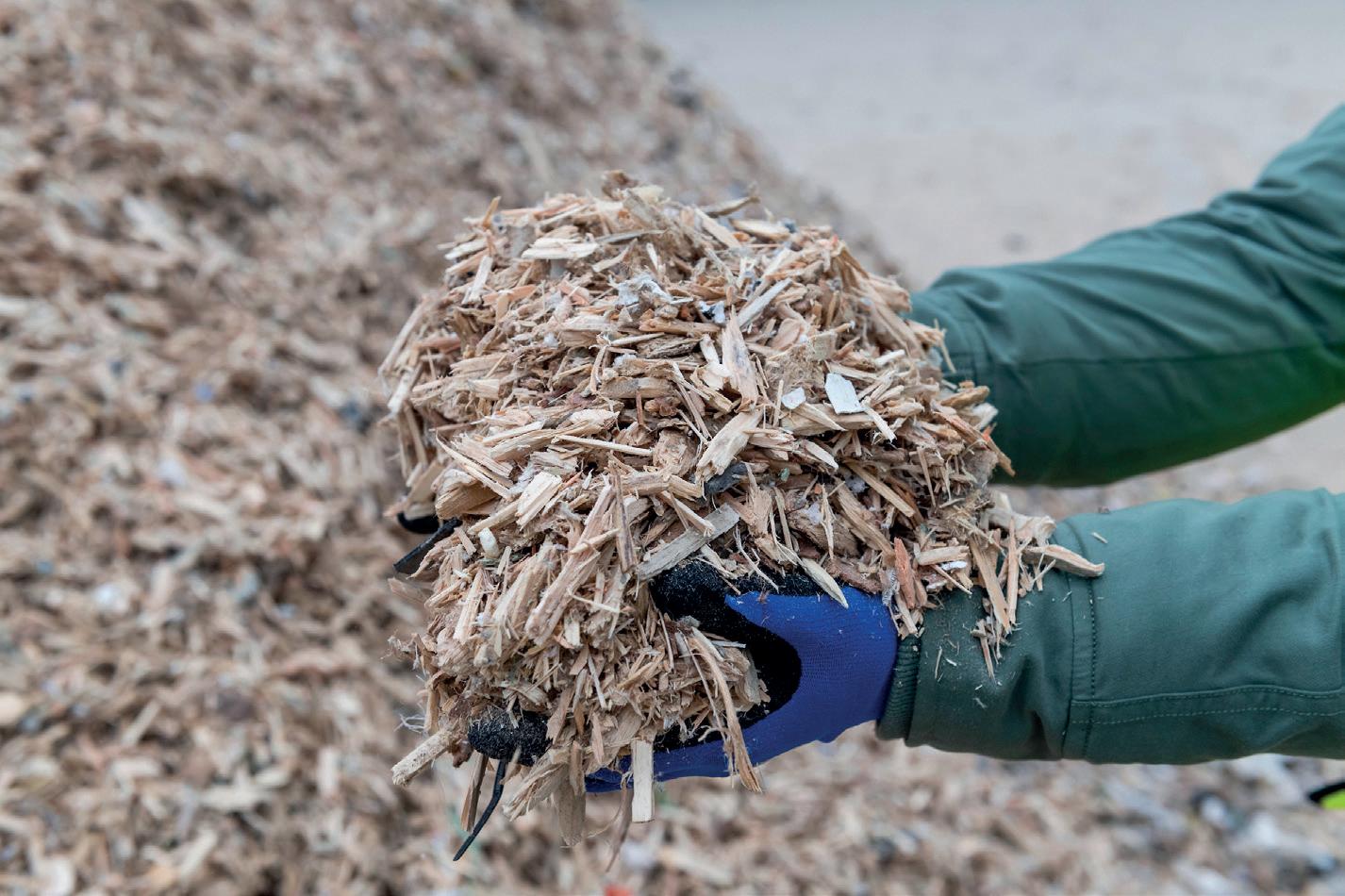
investment in this facility is north of $70 million.
“This facility allows a whole range of councils, businesses and developments around Brisbane to achieve landfill diversion targets that weren’t previously possible.”
ResourceCo’s energy business focuses primarily on recycling dry, commercial, industrial and construction-demolition waste, as well as the dry parts of household waste.
“This is typically hard rubbish collection, where there’s a lot of furniture and old timber and materials like that in the collection. It’s usually the councils that do that, and today, most of that all goes to landfill, but thanks to our
facilities it can be taken and turned into alternative fuel. The other source is dry C&I and C&D waste from council owned waste facilities,” Anning said.
He explained that the energy recovery process begins when ResourceCo’s partners, councils and other waste collection companies deliver their dry waste to the facility in bulk trucks.
“The material is unloaded at our facilities and then goes through a sorting process. We pick out anything that we don’t want to put through the plant, or anything that we can easily recycle. The remaining material is then loaded into a pre shredder that cuts the material down to an ideal size,” Anning said.
“Then, as material goes through the plant, there’s about 15 key pieces of machinery and equipment that
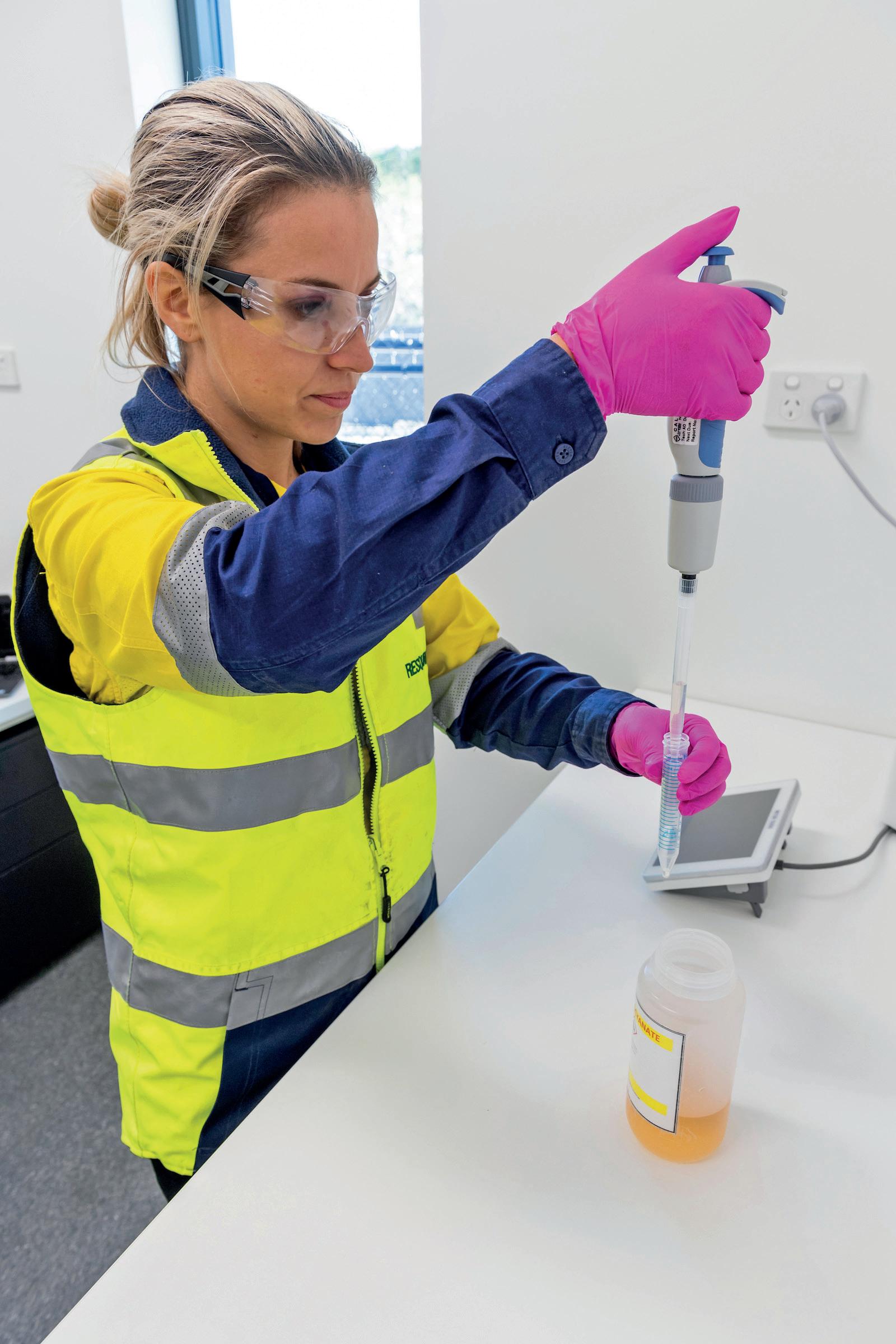
ResourceCo’s PEF is made to specification, with extensive testing a part of ResourceCo’s quality control processes. Images: ResourceCo
effectively ‘unscramble the egg’ and separate the waste out into different materials.
“We have magnets, size-based separation, density based air separators, ballistic separators to sort 2D or 3D items, optical sorters, and picking stations. We then have what we call secondary shredding, where the material is cut down to the size of the final product, which is Process Engineered Fuel [PEF].”
ResourceCo’s PEF has a lower emissions profile and is used to displace the use of fossil fuels that would otherwise be used to heat cement kilns.
“Every tonne of waste we divert from landfill saves, on average, one tonne of CO₂, due to the methane that’s prevented from being released, had that waste gone to landfill,” Anning said.
“Additionally, every tonne of the fuel that we produce replaces enough coal to save approximately one tonne of CO₂ as well. So, there’s significant carbon savings.
“Each of our facilities [located near Adelaide, Sydney and Brisbane] receive material from far afield. For example, at our Brisbane facility, we’re receiving material at the moment all the way from the Sunshine Coast, down to the Gold Coast, out west to Ipswich and everywhere in between. We’ve also had inquiries from others about specific materials all the way from Bundaberg and Stanthorpe, so our customer base is fairly wide.”
ResourceCo now has three energy recovery facilities across Australia, with the first developed in Adelaide over 15 years ago as a joint venture with Veolia.
With close to two decades of experience operating advanced energy recovery facilities under its belt, ResourceCo is a reliable partner for local governments navigating the modern waste management landscape.
“Mandatory climate-related reporting is upon us and business, councils and communities are increasingly aware of their greenhouse gas emissions. Facilities like this will help businesses and councils reduce their Scope Three emissions,” Anning said.
“In Queensland and other places around Australia, there’s the opportunity for a lot more of these facilities.
“It is a matter of getting all of the policy settings right to allow us and others to invest in a whole range of resource recovery facilities.”
To find out more about ResourceCo and its waste management solutions, visit resourceco.com.au/what-we-do/energy

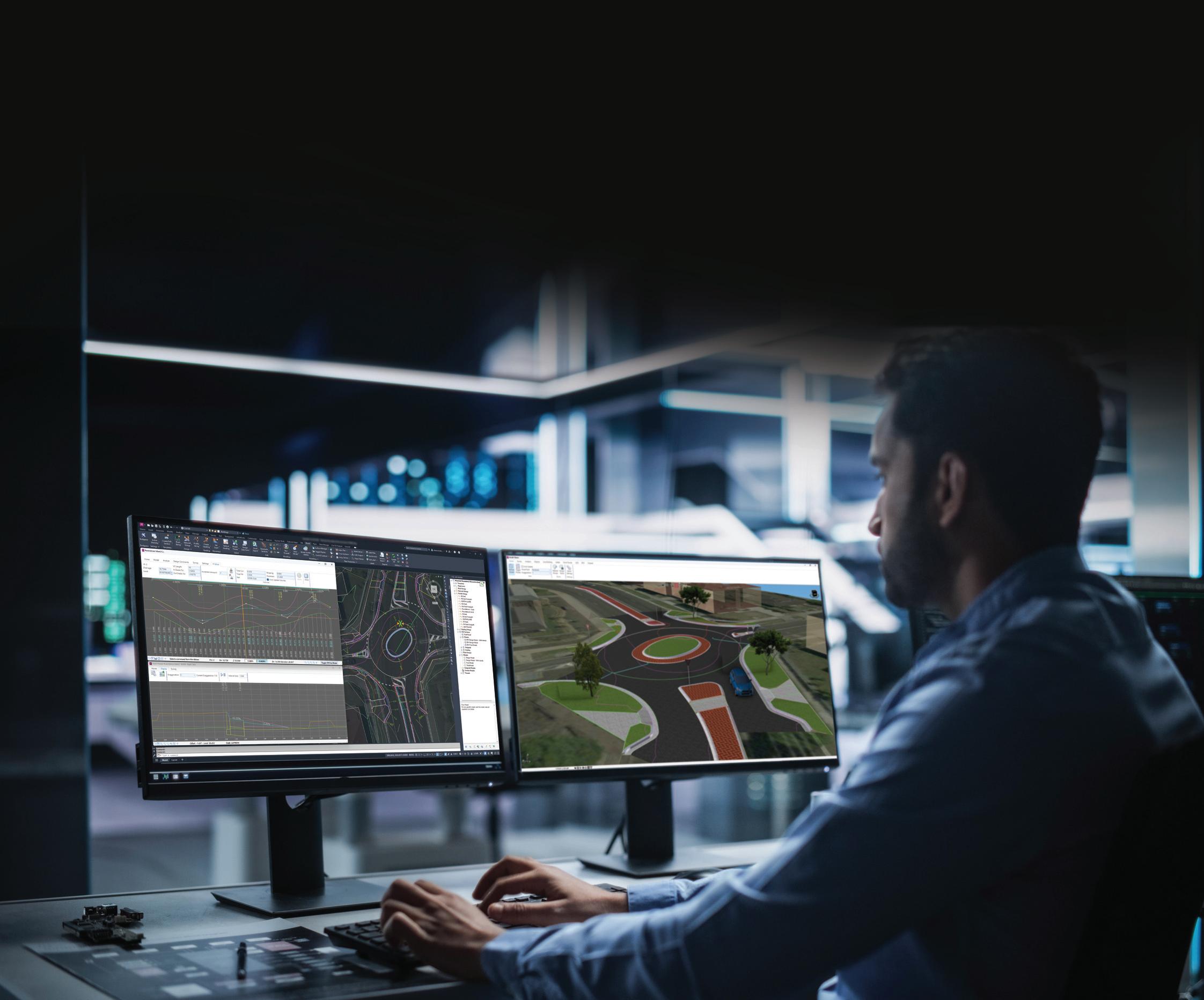
Civil Site Design® is an easy-to-use civil design solution that adds road reconstruction, road design, site grading, stormwater, pipe and sewer design capability to your CAD platform. Using familiar string and template design, Civil Site Design includes a complete set of civil tools to supercharge your design, in one low-cost version. Design and drafting are cleverly integrated to reduce wasted time and improve production outcomes.
Developed in Australia, Civil Site Design is already used by more than 120 councils.
To find out how Civil Site Design can leverage your CAD investment and save time on your next civil design project, use the QR code for a quick video overview.
Request your free 30-day trial or software demo now.




How embracing experimentation and collaboration is helping one of Australia’s fastest-growing municipalities tackle the climate challenge.
Local governments stand at the forefront of the climate change challenge. Charged with managing vital infrastructure, delivering essential services, and fostering community wellbeing, councils are increasingly grappling with the impacts of a changing climate – from extreme weather events and urban heat islands, to biodiversity loss and resource scarcity.
Finding effective, locally relevant solutions requires moving beyond
traditional planning cycles. The City of Casey, located in Melbourne’s rapidly expanding south-east corridor, is embracing one such approach: a Living Lab.
Building on its success with previous Living Labs focused on digital equity, the circular economy, and future mobility, Casey has now launched its Climate Action Living Lab. This initiative aims to accelerate the development and adoption of practical climate solutions
by providing a framework for real-world experimentation, collaboration, and community co-design.
At its core, a Living Lab is a user-centred, open innovation ecosystem, often operating in a specific geographic area or community context. It integrates research and innovation processes within a public-private-people partnership. The model encourages trialling new ideas,

technologies and services on a small scale, learning from both successes and failures, and allowing for rapid iteration and refinement before potentially scaling up.
There are three key components to a Living Lab:
1. Problem: Living Labs address multifaceted issues that have significant implications for the community, economy, and environment.
2. People: This model brings together diverse stakeholders – government, academia, industry, entrepreneurs, and the community – to foster collaboration and knowledge sharing. End-users (residents, businesses, community groups) are not just subjects of study but active participants in the innovation process. They help define problems, co-design solutions, provide feedback, and evaluate outcomes.
3. Place: Experiments and trials take place in real-life contexts (neighbourhoods, public spaces, businesses) rather than controlled laboratory environments. This ensures solutions are tested under genuine conditions, facing realworld complexities.
Climate change is the quintessential ‘wicked problem’ – complex, interconnected, and often lacking straightforward solutions. Traditional top-down approaches can struggle to address the localised nuances and diverse impacts of climate change effectively. The Living Lab model offers several advantages in this context:
• Adaptability and local relevance: By testing solutions in situ with community involvement, Living Labs ensure interventions are tailored to specific local needs, conditions, and social dynamics.
• Reduced risk: Small-scale trials allow councils to test innovative but potentially unproven ideas without committing significant resources upfront. Failures become learning opportunities rather than costly mistakes.
• Fostering innovation: The collaborative environment brings together diverse perspectives and expertise, sparking creative solutions that might not emerge from siloed approaches.
• Building buy-in and capacity: Engaging the community and stakeholders directly in the process builds understanding, acceptance, and ownership of climate actions. It also helps build local capacity to adapt and respond.
• Generating real-world evidence: Data and insights gathered from Living Lab trials provide robust evidence to inform future policy decisions, strategic planning, and largerscale investments.
As one of Australia’s largest and fastestgrowing municipalities, the City of Casey faces significant challenges amplified by climate change. Rapid urban development contributes to urban heat island effects, places pressure on existing infrastructure and natural ecosystems, and generates substantial waste and emissions. Council recognises its critical role in mitigating these impacts and building a resilient community.
Casey’s commitment is formalised in its Climate Action Plan which outlines ambitious goals for reducing council and community greenhouse gas emissions, enhancing biodiversity, transitioning towards a circular economy, and increasing climate resilience. The Climate Action Living Lab is a key mechanism designed to translate these strategic goals into tangible, on-the-ground actions. It provides a dynamic platform to explore, test, and validate innovative solutions that can contribute to achieving the Plan’s objectives.
The Climate Action Living Lab is focused on three areas, aligned with community priorities:
• Sustainability and biodiversity: How might we protect and increase native vegetation and animal habitat?
• Safety and climate resilience: How might we ensure the safety and wellbeing of the community during and after extreme weather events?
• Renewable energy: How might we increase the uptake of renewable energy for the community?
To address these challenges, organisations operating in the climateready space were invited to apply for a Climate Action Living Lab grant in August 2024. Following an extensive application process, six organisations have been chosen to partner with Council over the next 12 months to trial innovative solutions for climate action.
In partnership with the Monash Climate Change Communication Research Hub,
climate scientists will collaborate with local secondary school students and teachers to co-design engaging climate and energy education materials. The initiative aims to build climate literacy and empower young people to lead future environmental action.
2. HANDS-ON CONSERVATION OF ENDANGERED PLANTS
Royal Botanic Gardens Cranbourne will work closely with two local primary schools to involve students in cultivating the endangered Swamp Everlasting (Xerochrysum palustre). This hands-on conservation experience fosters environmental awareness and a sense of stewardship among young learners.
3. INNOVATIVE WEED MANAGEMENT FOR HEALTHIER WETLANDS
With support from Federation University, this project trials UV-C light technology in Casey’s wetlands as an alternative to chemical weed control. The goal is to protect sensitive ecosystems while exploring more sustainable land management practices.
4. CLEAN MOBILE POWER FOR GREENER EVENTS
Equoia will deploy mobile batterypowered “Power Droids” at Council-run events across Casey. By replacing noisy, polluting diesel and petrol generators, the project offers a cleaner, more sustainable way to power community activities.
5. PROTECTING LOCAL WILDLIFE THROUGH CITIZEN SCIENCE
The Western Port Catchment Landcare Network will monitor Southern Brown Bandicoot populations using wildlife cameras placed throughout Casey. Local schools and residents will contribute to this vital conservation effort through community-based data collection.
6. LISTENING TO KOALAS FOR BETTER CONSERVATION
The Mornington Peninsula and Western Port Biosphere Reserve Foundation will use acoustic monitoring to detect koala vocalisations across the Western Port Koala Corridor. The data gathered will support more targeted and effective conservation strategies for Casey’s koala population. These six projects showcase the breadth of the Climate Action Living Lab, leveraging partnerships and community involvement to test practical solutions across Council’s key climate action priorities. The outcomes over the next year will provide valuable data and insights for future initiatives and potential scale-up opportunities.
The Climate Action Living Lab is not Casey’s first foray into this innovative model. Council has previously established three other Living Labs, each generating valuable learning opportunities and positive impacts:
• Digital Doveton (Digital Equity Living Lab): Focused on bridging the digital divide in the Doveton community. This Lab trialled initiatives like free public Wi-Fi, community tech support hubs, digital literacy training programs, and affordable device access schemes. It generated crucial data on the specific barriers residents faced and tested practical solutions, leading to improved digital inclusion and informing Council’s broader digital equity strategies.
• Circular Casey (Circular Economy Living Lab): Aimed at accelerating the transition to a circular economy within the municipality by reducing food waste, reducing construction and demolition waste, and improving building maintenance. Trials included a household food waste reduction campaign, an app for retailers to sell surplus food, coffee ground collection for community gardens, and investigating new models for resource recovery. Circular Casey provided tangible evidence of community interest in waste reduction and reuse, and informed the review of Council’s asset disposal policy.
• Future Mobility Living Lab: Explored safe and sustainable transport solutions for the growing municipality. This involved a trial to enhance pedestrian safety in school zones, and exploring eco-friendly alternatives to materials used in street paving. The Lab provided valuable insights into safe and sustainable ways for residents to move around the City, informing Council’s road safety and infrastructure initiatives. The success of these earlier Labs demonstrated the power of the model to tackle diverse, complex local government challenges. They proved the value of real-world testing, stakeholder collaboration,
and iterative learning in developing effective, community-centred solutions.
The City of Casey’s commitment to the Living Lab model offers several takeaways:
• Embrace experimentation: Be open to trialling new ideas on a small, manageable scale. Living Labs provide a relatively low-risk environment to test innovations before wider rollout.
• Harness collaboration: Complex problems require diverse perspectives. Actively seek partnerships with industry, academia, research institutions, community groups, and residents.
• Centre the community: Involve endusers and the broader community throughout the process – from identifying priorities to participating in trials and evaluating solutions. This ensures relevance and builds buy-in.
• Learn iteratively: View trials, even unsuccessful ones, as learning opportunities. Collect data, evaluate honestly, and adapt your approach based on real-world evidence.
• Connect to strategy: Ensure Living Lab activities align with broader Council goals and strategic plans to maximise impact and justify investment.
As climate change impacts intensify, local governments need dynamic, adaptive, and collaborative approaches.
The City of Casey’s Climate Action Living Lab exemplifies how the Living Lab model can be a powerful tool to cultivate local solutions, engage the community, and accelerate progress towards a more sustainable and resilient future. Its journey, including the evolving project trials, offers a valuable case study for councils nationwide seeking to turn climate ambition into tangible action.
Read more about the Climate Action Living Lab, and download the Living Lab Playbook to discover how this approach can help your organisation create impactful solutions, at casey.vic.gov.au
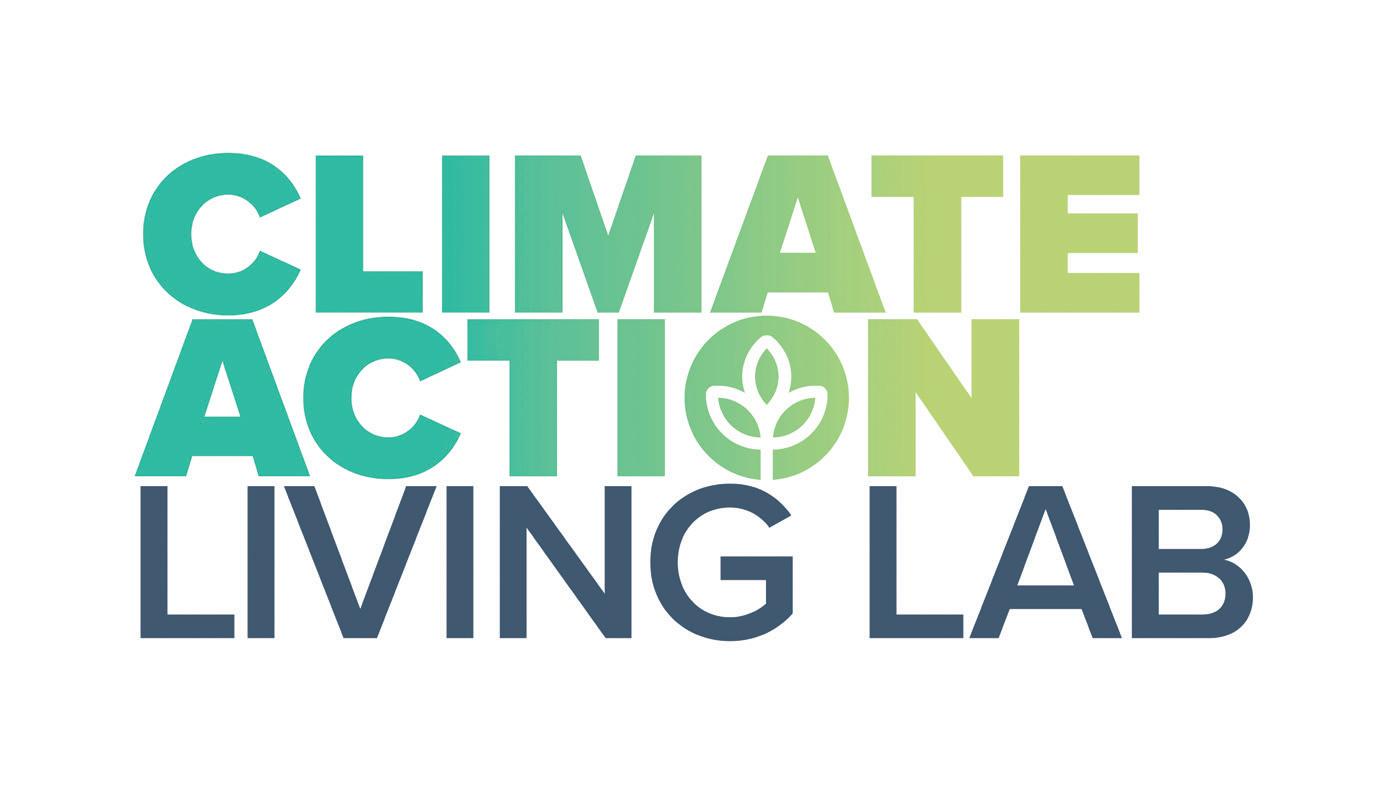
For many councils, the mandate to cut emissions and build energy resilience is clear – but the path to get there can be anything but.
Rising energy costs, ageing infrastructure, and capital constraints can present a challenge to even the most forwardthinking local governments.
So how do you scale renewable energy solutions when budgets are stretched, staff are at capacity, and community expectations keep rising?
A growing number of councils are turning to Power Purchase Agreements (PPAs) – a commercial model that makes it possible to deploy solar projects quickly at scale.
Under performance-based PPAs, councils can access solar systems with no upfront capital investment. Instead, energy partners like Origin fund, install, operate and maintain the solar infrastructure, and councils simply purchase the electricity it produces.
This structure enables councils to adopt renewable energy with minimal risk or operational burden, and without any ongoing maintenance costs.
The cost of the energy delivered under a PPA is generally lower than the cost of grid electricity – providing both immediate savings and long-term energy price certainty.
For councils under pressure to decarbonise while maintaining financial discipline, PPAs provide a compelling pathway to accelerate renewables.
Local governments have a unique opportunity when it comes to scaling renewable energy adoption.
In Queensland, Logan City Council is working with Origin to deploy solar and explore battery-backed systems across community facilities as part of its broader sustainability strategy.
“Logan is a city of opportunity – we’re young, we’re growing fast, and we have so much potential. On any given month we have two or three suburbs that are in the top five fastest growing suburbs in the country,” Logan City Council Mayor, Jon Raven, said.
“With so many people moving here, that means more demand on the energy grid. Origin is helping us assess a range of solutions for helping us lower our energy costs, reduce our carbon footprint, and improve our community’s energy resilience – including Origin’s PPA model,” said Mayor Raven.
The success of these projects doesn’t hinge solely on panels or contracts. It’s about working with energy providers who can offer deep technical expertise and provide tailored solutions with a clear return on investment.
“We work with councils to take a whole-of-site approach — modelling usage, designing tailored solutions, and structuring PPAs to deliver value from day one,” said Liam McWhirter, General Manager of Enterprise and Strategic Partners at Origin.
“Our goal is to help local governments move fast with confidence and unlock value in the transition.”
Beyond solar, more councils are also exploring the strategic role that battery storage can play. While not currently included under PPA arrangements, batteries are increasingly adding value as part of broader integrated energy and decarbonisation strategies.
In Melbourne, Origin is partnering with City of Melbourne to accelerate the city’s transition to renewable energy – installing three battery energy storage systems as part of the Power Melbourne project.
“More councils are realising that batteries aren’t just for backup – they’re a strategic asset,” McWhirter said.
“They allow you to take control of your energy use and open up new income opportunities through services like frequency control or participation in a VPP.”
Whether it’s powering community hubs, keeping services running during blackouts, or reducing exposure to volatile energy markets, solar (and increasingly battery storage) is fast becoming essential infrastructure. Councils that embrace solar and battery storage can cut energy costs, reduce operational risk, and contribute to their net zero targets.
With the right partners and commercial models, councils can now deploy these systems faster, smarter, and with less financial risk – setting the standard for what clean, resilient, and community-driven energy looks like.
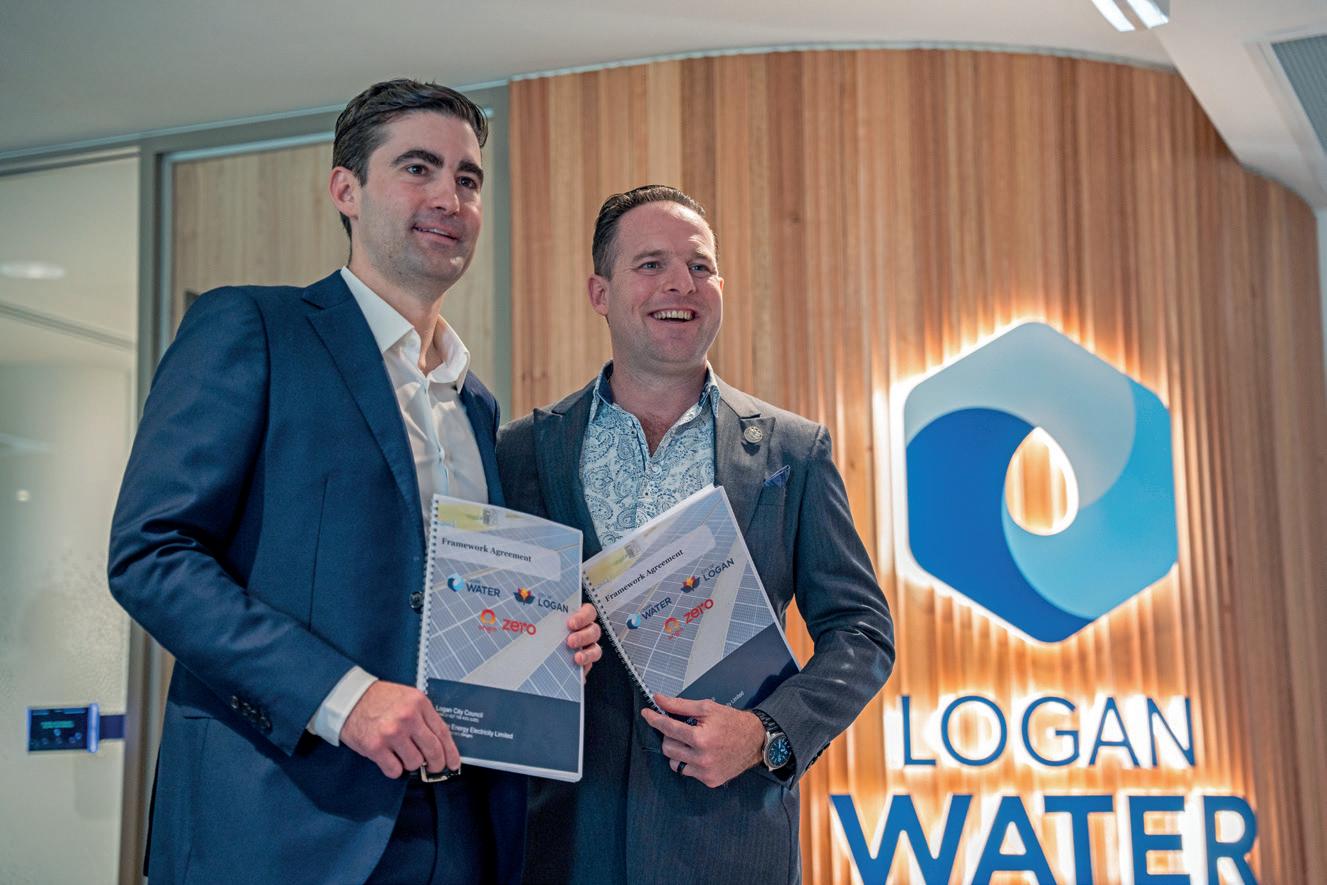

Automated Inspections: Perform rapid, accurate manhole inspections with high-definition 360-degree video.
Cloud Connectivity: Seamlessly transfer inspection data to the cloud via the WinCan WebFlex app.
Actionable Data in Minutes: Generate reports quickly with features like AI-driven defect identification, 3D modelling, and laser range finding.

Efficiency Boost: Inspect more manholes in a single day, transforming hours of manual work into minutes
Portable and Wireless: Operates without cables, increasing operator mobility and ease of use.
Contact SECA today to explore how the Quickview 360 can save time and improve the precision of your manhole inspections. Visit us online at seca.com. au or call 1800 028 584.
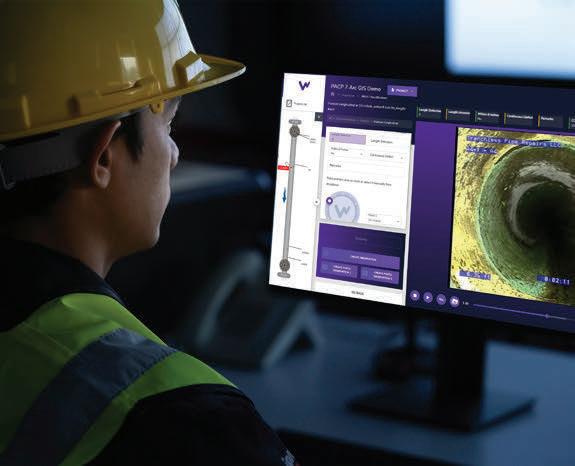




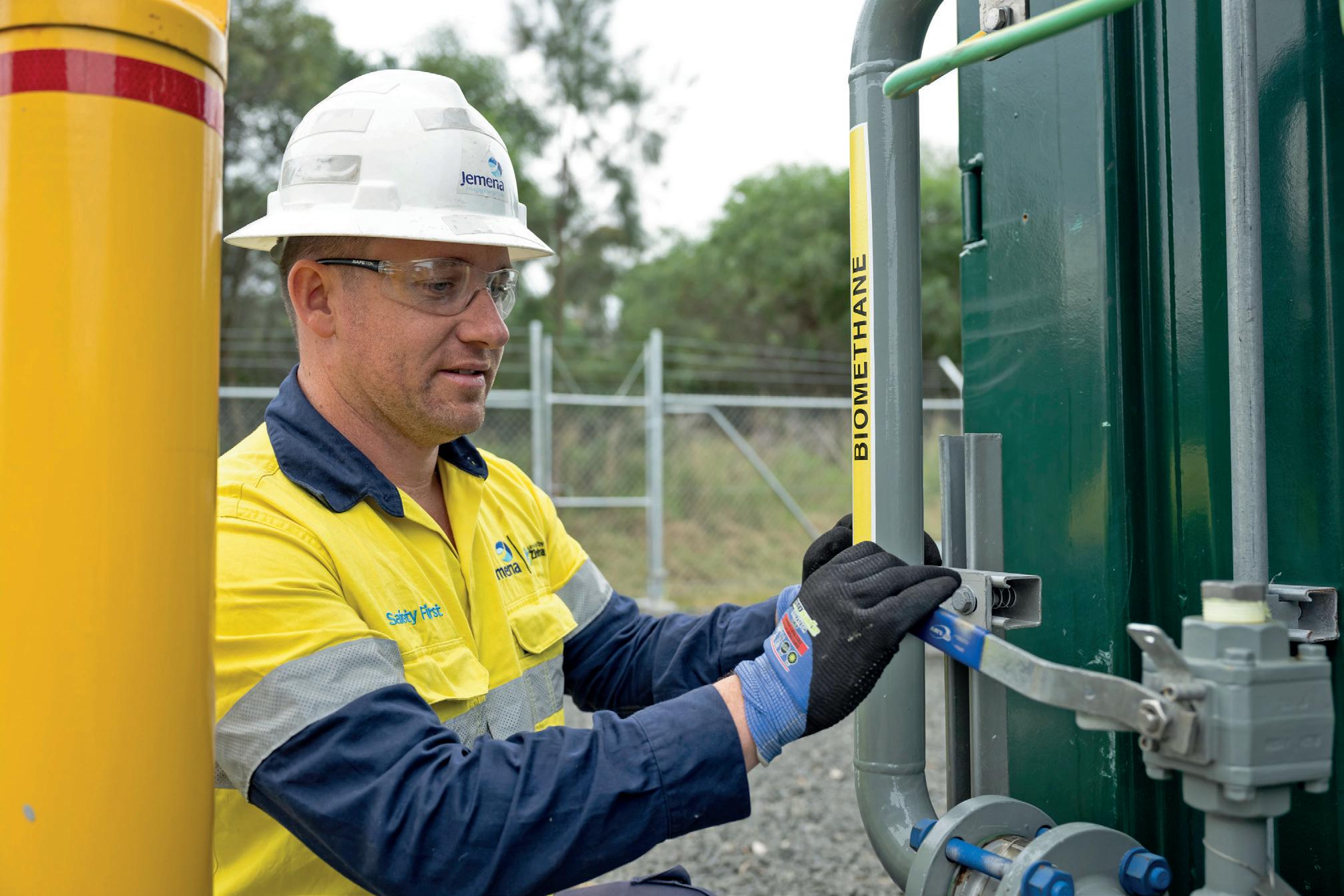
As Australia accelerates efforts to decarbonise its economy, renewable gas is emerging as a potentially critical energy solution for key industry sectors.
While natural gas remains vitally important to the production of many essential products, the need to reduce emissions from their manufacturing processes is becoming increasingly urgent.
Australia’s manufacturing sector, valued at over $100 billion, supports hundreds of thousands of jobs and relies heavily on natural gas to fuel hightemperature industrial processes. These include the production of cement, bricks, fertilisers, glass, steel, and pharmaceuticals – production processes for which electrification is currently either technically and logistically challenging or financially prohibitive.
The Federal Government has acknowledged the continued role of gas in the clean energy transition and beyond, particularly in hard-toabate sectors. As a result, industry participants want access to lowcarbon energy sources – including renewable gases like biomethane – to support decarbonisation efforts
without impacts to productivity or international competitiveness.
Energy distributor and infrastructure company Jemena, which owns and operates major gas and electricity networks and assets across Australia’s eastern states, is advancing a series of renewable gas initiatives, focused primarily on biomethane, a low emission renewable gas and energy source derived from organic waste. With applications particularly relevant to manufacturing and industrial sectors, biomethane offers a direct or ‘dropin’ substitute for natural gas and is compatible with existing equipment, pipelines and infrastructure.
The technology is being applied through Jemena’s Malabar Biomethane Injection Plant in Sydney. Operational since 2023, the facility is injecting the equivalent of the average annual gas consumption of approximately 6300 homes into the NSW gas distribution
network. The company states that the plant has demonstrated the technical and commercial feasibility of incorporating biomethane into the gas grid.
Biomethane is already being used with great success in Europe, where countries such as Germany, France, Italy and UK are scaling up production, according to the European Biogas Association. Denmark is Europe’s poster child for biomethane application, with around 40 per cent of its gas network made-up of the renewable gas. Energinet, Denmark’s energy network operator, estimates that they will reach 100 per cent biomethane in the gas grid by 2030-2034, helping to eradicate any reliance on imported fossil gas.
The broader aim here in Australia is to support hard-to-abate sectors – such as steel, cement, and food production – in meeting emissions reduction targets under the Federal Government’s Safeguard Mechanism and other decarbonisation frameworks.
Many of these industries rely on high-temperature processes not easily or affordably converted to electricity, making low-emission gas alternatives essential to a balanced energy transition.
In the past year, Jemena has entered into a number of agreements with renewable gas producers including Valorify, Optimal Renewable Gas, Sojitz, and GCE. These arrangements aim to evaluate additional biomethane supply opportunities, particularly in regional communities where agricultural waste can be converted into energy, contributing to both local economic activity and emissions reduction.
A 2022 study by Enea Consulting estimated that up to 137 petajoules (PJ) of biomethane could be produced annually in NSW alone – more than the state’s current gas demand. Moreover, the Australian Renewable Energy Agency’s (ARENA) Bioenergy Roadmap projects that bioenergy could contribute up to $10 billion to GDP per year, create more than 26,000 jobs, and reduce emissions by nine per cent by 2030.

To help scale production, additional policy signals are needed, including the recognition of renewable gas under the National Greenhouse and Energy Reporting (NGER) Scheme and inclusion in schemes such as the NSW Renewable Fuels Scheme. The establishment of a National Renewable Gas Target,
Biomethane, a low-emission renewable gas and energy source derived from organic waste, has become a priority.
mirroring the approach taken with renewable electricity, could also help to stimulate investment and develop the market for renewable gas.
According to Suzie Jakobovits, Jemena’s General Manager of Renewable Gas, supportive government policy will be essential to unlocking the sector’s full potential.
“Renewable electricity has benefited from targeted support over the past 25 years,” Jakobovits said.
“For renewable gas to complement the energy transition and help decarbonise
Australia can learn from Europe, which has around 40 per cent of its gas network using renewable gas.

industry as well as other hard-to-abate sectors, we need a similar level of focus on enabling both supply and demand.”
Biomethane’s chemical similarity to natural gas allows industrial users to transition to the low-emission renewable gas without major capital outlay for new equipment, infrastructure and operational upgrades.
Jemena’s renewable gas push also aligns with recent signals from government. Earlier this year a communiqué from the Energy and Climate Change Ministerial Council in mid-March, confirmed Federal and state energy ministers are exploring policy pathways to support renewable gas, particularly in sectors where electrification is not feasible.
Jemena’s Malabar facility received GreenPower certification last year, providing a mechanism to verify and track renewable gas supply, similar to renewable electricity certificates. This was an important development for the nascent renewable gas industry in Australia.
For councils and regional development bodies, the expansion of renewable gas projects could present new opportunities for waste-to-energy partnerships, improved waste and FOGO (Food Organics and Garden Organics) management opportunities, regional job creation, and increased energy security. With many of the proposed biomethane facilities located near agricultural centres, local government could play a key role in project development, community engagement, and attracting new commercial opportunities to the regions.
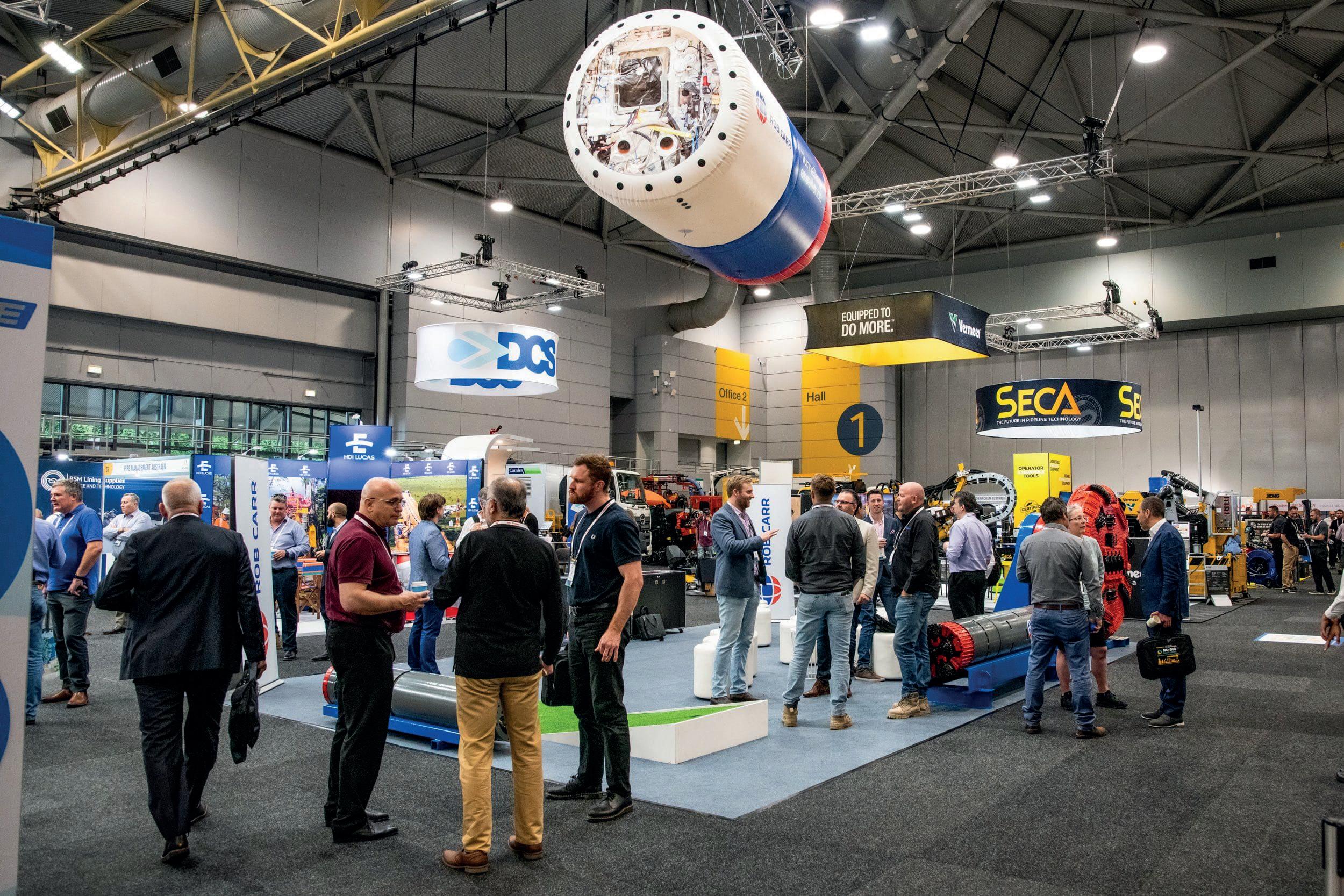
No-Dig Down Under, the largest technology event in the Southern Hemisphere, is returning once again in 2025. Pipe Core, a gold sponsor and long-term partner of No-Dig Down Under, touches on what makes the event so unique.
No-Dig Down Under (NDDU), organised in partnership with the Australasian Society for Trenchless Technology (ASTT), has become a flagship event for professionals working with subsurface infrastructure.
Pipe Core – a provider of equipment and materials for pipeline inspection, cleaning, repair, and renewal across wastewater, stormwater, potable water, and culvert networks – has proudly partnered with NDDU for many years.
It’s an affiliation that Pipe Core CEO Jason Marshall said reflects the conference’s enduring role as a mouthpiece for the future of the trenchless technology sector.
“It’s one of the most important events on our calendar, not only

because of its professionalism, but because it brings the entire industry together,” Marshall said.
sustainable outcomes for underground infrastructure. It’s also where we build lasting relationships with customers and international partners.”
Bringing together local government, contractors, utilities, and engineering specialists, the conference blends technical presentations, training, and exhibitions. It’s where ideas move from theory into practice.
Trenchless technology is important for installing new services, as well as rehabilitating and maintaining existing pipelines and infrastructure, without having to dig multiple trenches, disturbing traffic, businesses and residential locations.
With major utilities located underground and requiring ongoing upkeep and extension, No-Dig Down Under is a crucial event for local government representatives and those involved in planning decisions for major infrastructure projects.
Training programs delivered through No-Dig Down Under play a key role in upskilling the industry. From horizontal directional drilling (HDD) techniques to risk management and safety best practices, the focus is squarely on capability development.
For engineers looking to future-proof their careers, or their councils’ asset strategies, these sessions provide direct access to global knowledge.
Marshall said it’s these aspects that truly make NDDU a destination event. He added that the service provided by Pipe Core aims to support those attending the conference.
“NDDU gives us a direct platform to connect with contractors, councils, asset owners, and industry specialists who are shaping the future of trenchless infrastructure,” he said.
“As a gold sponsor of No-Dig Down Under 2025 and Platinum Sponsor of International No-Dig 2026, this event is a natural fit. It aligns with our commitment to innovation and gives us the opportunity to share new technologies, such as fully electric cleaning systems and advanced relining materials, with the industry in person.”
Marshall said the event provides unique

trenchless technology.
“In the local government sector, we support asset owners and councils with proven systems for CIPP relining, UV relining, and drain maintenance,” he said. “Our tailored approach includes supplying world-class equipment, high-quality materials, expert training, and technical support to help extend infrastructure life and deliver smarter, more sustainable outcomes.
“Our strength lies in strong global partnerships and a commitment to advancing trenchless practices through innovation, training, and collaboration.”
NDDU’s training courses and technical program are supported by an exhibition hall extending over 4500 square metres, featuring exhibitors from all sectors of the industry.
This will include the introduction of brand-new technology from Pipe Core, as Marshall explained.
“We’re looking forward to reconnecting with customers, showcasing our newest technologies, and celebrating successful project outcomes across Australia and New Zealand,” he said.
“We’re especially excited to share highlights from the first installation of SAERTEX-LINER H2O from SAERTEX multiCom, in Australasia, as well as innovations from our other international partners, including Picote Solutions, Lateral Repair, Rausch Rehab, Vertiliner, Renssi, Ritec, HD-Sanierungstechnik, Cosmic Engineering, Scanprobe, Schneider, Hächler, UV Relining, and ROM bv.
“It’s a valuable opportunity to share insights, listen, and continue moving the industry forward.”
Equally important is the chance to see new tools and systems in action.
From robotics to real-time mapping and vacuum systems, trenchless innovation is being matched by technological progress.
“NDDU is more than a trade show, it’s a reflection of where our industry is headed,” Marshall said. “We’re proud to support it and excited to continue contributing to the progress of trenchless technology, together with the professionals who make it all happen.”
Finally, three sponsored social functions will be held, including the prestigious ASTT Gala Dinner and Awards Evening, providing attendees with networking opportunities in a variety of settings with industry professionals.
This year, NDDU will also be colocated with Converge – a new event for the municipal works, civil and commercial construction industries.
No-Dig Down Under will feature a number of solutions suited to local government and council infrastructure works. Image: stock.adobe.com/ myphotobank.com.au
For more information on the conference, visit: nodigdownunder.com
To get in touch for direct event enquiries, contact Show Director Siobhan Rocks: siobhan.rocks@ primecreative.com.au M: 0406 343 104















































Across Australia, many residents feel unheard by their councils –and it’s not just a perception issue. It’s a call to action.
Datascape’s recent community engagement research into citizen sentiment reveals a growing disconnect between local governments and the communities they serve. While 52 per cent of Australians consider themselves “engaged” with council services, only 27 per cent feel truly heard by their council – a significant drop from 35 per cent the year prior. Meanwhile, nearly two in three Australians say they’re unaware of the full range of services their council provides, and only 46 per cent feel wellinformed about council activity.
Even more concerning, just 28 per cent believe their council is transparent with financial management, over 90 per cent want clearer, more accessible financial reporting and only 39 per cent say it’s easy to find out how their council is investing in the community.
These figures paint a clear picture –communities want more visibility, more responsiveness, and more trust from their local councils. And they’re open to new ways of achieving it.
THE OPPORTUNITY: DIGITAL DONE RIGHT
Despite the growing pressure, there’s optimism too. When asked how engagement could improve, many citizens pointed to a simple solution: smarter use of technology.
More than 60 per cent of Australians say their council doesn’t have a strong relationship with technology, and nearly half would be more likely to engage if council issues could be addressed digitally.
In fact, two in three people support the idea of a council app, with interest jumping to more than 80 per cent among younger generations. 70 per cent say they’d feel more confident in their council if it invested more in technology.
These responses highlight a clear public appetite for accessible, digitalfirst channels of communication — not to replace traditional ones, but to enhance and complement them.
Datascape’s Antenno app is helping councils bridge the gap between digital expectations and community outcomes. Designed with simplicity and inclusivity in mind, Antenno enables residents to; report local issues in real time – from potholes to graffiti – complete with photos, location pins and notes; receive timely, location-based alerts from council; stay informed about services and initiatives relevant to their suburb or street; and feel heard through direct, push-notification responses.
Antenno doesn’t just digitise service requests – it redefines councilcommunity engagement beyond the constraints of other council social media platforms.
In Western Australia’s Shire of Manjimup, the first council in the country to roll out Antenno, community feedback has been overwhelmingly positive. Locals say they feel more informed, more connected and more aware of what their council is doing with their rates. Councils, in turn, are seeing clearer communication pathways and greater trust.
Meanwhile, Tasmania’s Central Coast Council has integrated Antenno into its day-to-day operations since 2022.
“We’re now getting a third of our service requests through Antenno,” said Sarah Searle, Director of Corporate Services.
“People are reporting issues that would’ve otherwise gone unnoticed – and they’re doing it because it’s just that easy. Working with Datacom was straightforward, supportive, and delivered great outcomes.”
To explore how Datascape and Antenno can support your council’s journey toward more meaningful, tech-enabled engagement, visit datacom.com

The project aimed to increase the efficiency and safety of the road. Image: New South Wales Government
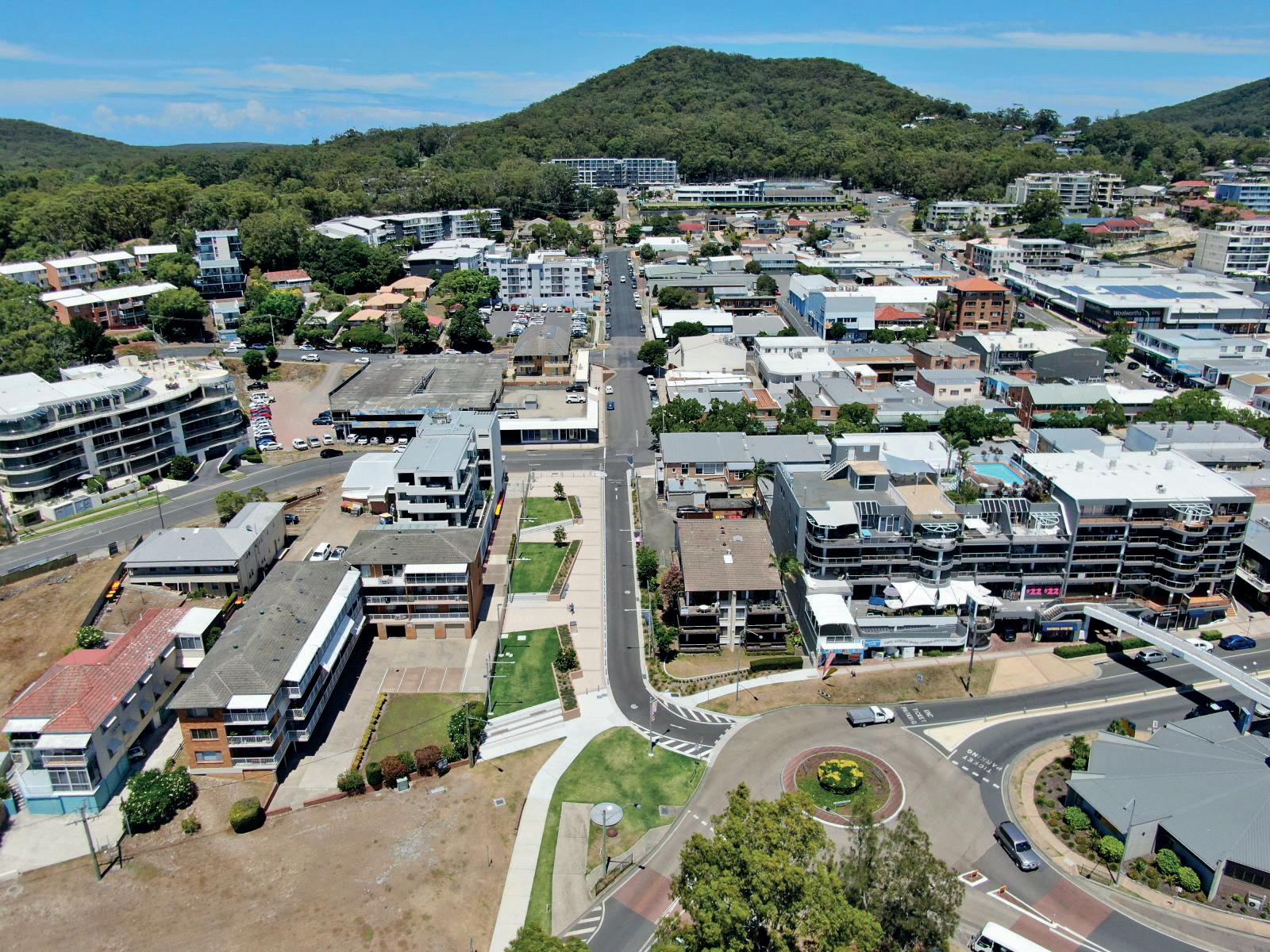
A deceptively complex pedestrian crossing in New South Wales has become a showcase for how councils can deliver safe, compliant and efficient active transport infrastructure – thanks in part to clever use of civil design software.
Set in the heart of the quiet coastal township of Karuah, the new raised pedestrian crossing on Tarean Road might seem like a straightforward piece of local infrastructure.
However, for the design team at Port Stephens Council, it became a surprisingly intricate challenge – one that required technical skill, regulatory awareness, and the right tools to bring it all together.
Located on a former section of the Pacific Highway, Tarean Road carries significant traffic, including heavy vehicles. The crossing site links Karuah’s main residential area with essential
services and the public school, forming a critical part of the community’s walking network. For pedestrians, the original crossing was neither adequate nor safe.
“It was identified as a trouble spot for pedestrians,” said Steve Startin, Civil Design Team Leader at Port Stephens Council.
“It’s a B-double approved detour for the Pacific Highway, and even though it’s now more residential, you still have heavy vehicle traffic going through at times.”
Recognising the risks, Council secured funding through the NSW
Government’s Get NSW Active: Active Travel to School program, aiming to deliver a raised pedestrian crossing that improves safety, visibility, and walkability for local residents –particularly children heading to school.
Although modest in size, the design had layers of complexity.
The existing site was hemmed in by physical constraints, including footpaths, driveways, shopfronts and stormwater infrastructure.
“There was an existing crossing there at the time, but it wasn’t to standard
or appropriate for this location,” said Startin.
“The project involved not just raising the crossing but integrating it with blisters, kerb ramps, a median, and improving lighting and sightlines.”
Trainee Civil Designer, Dylan Pennicott, who took the lead on the design, said the project pushed him to apply both his formal training and his practical experience.
“Even though it’s a smaller project, it was quite intricate,” he said.
“There were lots of vertical geometry challenges with kerb and gutter on both sides, blisters, ramps –everything had to be carefully graded and compliant.”
A key challenge was ensuring accessibility under the Disability Discrimination Act (DDA) while working within tight space constraints. The solution required precise grading and geometry across multiple elements.
“We had to be very strict on the DDA compliance,” Startin explained.
“There were constraints on all four sides of the site. Being able to interrogate and grade things accurately using the software meant we could deliver a design that was compliant and safe.”
For the Council’s civil design team, Autodesk-based Civil Site Design (CSD) software proved instrumental.
Australian made, it’s been the in-house platform of choice for nearly a decade, chosen for its accessibility, adaptability and ability to integrate with various data formats.
“It’s our defined delivery software,” said Startin.
“We get all our inputs from the
What stood out for the team was Civil Site Design’s balance of speed and sophistication.
It allows experienced designers to create and adjust alignments, surfaces and grading on the fly, while also supporting newcomers with its visual modelling capabilities.
“For someone new to the industry, like Dylan, the model viewer is massive,” said Startin.
“It allows you to see what the design is doing in 3D, which makes a huge difference for understanding and communicating the design.”
Dylan agreed: “That was probably the biggest help. You can visually see what’s happening – if a triangle’s cutting through a code or string, you know something’s gone wrong. You can backtrack and fix it quickly.”
Dylan undertook formal training in rural road reconstruction through Civil Survey Solutions, but much of his learning came from working through design challenges on the job, supported by his team and online resources.
“I watched a lot of the YouTube series and webinars,” he said.
“There’s one on variations that gets quite in-depth – that was really helpful.”
While the software is tailored to road design, Council has found it can be readily adapted for other urban infrastructure, including footpaths, crossings, and car parks.
“We’ve had to adapt it to suit these non-road projects,” said Startin.
“You’re using constraints – like a consistent 2.5 per cent crossfall – so you know everything will tie in properly. We know the standards, and we can use the program to implement and test

outputs and 3D modelling, has made it especially valuable for Council’s varied workload.
“Another one of our team is currently using it on a car park project. It’s flexible enough that you can make it work on all kinds of infrastructure.”
The Karuah crossing was one of Dylan’s first live projects.
Having come from a construction background, he brought a real-world perspective to the design process – and Civil Site Design helped him translate that into deliverable documentation.
“I knew how it would be constructed in the real world,” he said.
“So I could twist that with what I was learning in the software to make the design work.”
He credits the software’s intuitive interface and Council’s support network for helping him hit the ground running.
“Within the software, I think the most important skill I picked up was just knowing there are different ways to achieve the same result,” he said.
“Sometimes a grading string is all you need. Other times you need a profile string. You start to understand what works best where.”
The broader team played a key role in supporting his learning curve.
“With the knowledge in-house, we were able to set Dylan up and let him take the lead,” said Startin.
The project, completed in April 2025, delivered a safe, accessible and visually improved crossing for the Karuah community.
The new crossing is now used daily by pedestrians, including schoolchildren and shoppers.
“One of the key actions of the Karuah Place Plan is to provide more pedestrian crossing opportunities and making it easier to cross the road – which this crossing has allowed. It’s doing its job,” said Startin.
For the team, it was a valuable learning and development experience, not just in design and delivery, but in extracting the full value from a flexible software platform.
“The CAD output is extremely easy for services and long sections,” said Dylan.
“That, and the model viewer, are probably the most satisfying parts to use. You click a button and everything lines up – very satisfying.”
As for future projects, the Council plans to keep using and adapting Civil Site Design across its civil works program.
For information, visit civilsitedesign. com.au or portstephens.nsw.gov.au
Kia’s first entry into Australia’s fiercely competitive utility vehicle market arrives in July, and it’s got local government fleets firmly in its sights.
The new Tasman dual-cab ute is being marketed as the ‘most Australian Kia ever developed’, and while the tagline carries the usual marketing gloss, there’s genuine substance behind the pitch – especially for councils looking to modernise or expand their light commercial vehicle fleets.
Unlike some competitors built for style over substance, the Tasman focuses squarely on utility. Across the three launch variants – dual cab pick-up, dual cab chassis and single cab chassis – it offers the flexibility required for diverse council operations, from parks and gardens teams, to road maintenance crews and animal control units.
At its core is a proven 2.2-litre turbo diesel engine producing 154 kilowatts of power and 440 Newton-metres of torque, paired with an eight-speed automatic transmission. This drivetrain combination strikes a practical balance between performance and efficiency, suitable for regional and urban councils alike.
Fleet managers can see some reassuring numbers too, with the Tasman carrying a gross vehicle mass (GVM) of 3,250 kilograms and a gross combination mass (GCM) of 6200 kilograms. Towing capacity tops out at 3,500 kilograms, supported by a 350 kilogram tow ball rating and an integrated trailer brake system. It is likely to be a highly attractive option for Councils moving equipment between depots or hauling mobile infrastructure.

The payload reaches over the critical one-tonne benchmark, ensuring the Tasman can carry tools, materials and supplies without compromise.
Best-in-class tub capacity of up to 1173 litres (VDA) means it can take a full-sized Australian pallet – just one element that Kia has dialled in specifically for the Australian market.
For regional local governments, the Tasman’s off-road credentials can ensure access to (and exit from) some of the less-visited corners of any council area.
Terrain Mode and underbody camera monitoring (via Kia’s Ground View technology) provide genuine capability
The new Kia Tasman features a 2.2-litre turbo diesel engine producing 154 kilowatts of power. Image: Kia
on unsealed roads, in soft sand or through rough country tracks – key for inspectors or environmental teams accessing remote or rugged areas.
The Tasman ute also reflects recent shifts in fleet design towards comfort and usability, not just durability.
Councils under pressure to improve worker safety and fatigue management will note the reclining second-row seats, under-seat storage, and a 72-centimetre panoramic digital display that brings vehicle diagnostics and navigation into clear focus.
Charging ports inside the cabin and in the tub offer flexibility for field teams running tools or equipment off the vehicle’s power system. Storage has also been carefully designed, with up to 45 litres available under the rear seats –enough for PPE, paperwork, or portable devices without cluttering the cabin.
Councils know that resale value and whole-of-life costs are critical to fleet procurement decisions. While the Tasman is new to the segment, the 2.2-litre diesel engine is a known quantity, having already been used in other vehicles, like the award winning Kia Sorento and Carnival. This is likely to give some assurance
in terms of reliability and long-term parts availability, particularly in regional areas where fleet servicing logistics are more complex.
Kia’s growing footprint in Australia helps support its case as fleet provider. With an expanding dealer network and increasingly familiar fleet support systems, the Tasman doesn’t feel like a risky first step but a calculated expansion into a sector where the brand already supplies SUVs and passenger vehicles to various branches of government.
The July launch is likely to be watched closely by fleet managers juggling tightening procurement budgets, evolving emissions goals, and operational expectations for asset utilisation.
The Tasman could appeal as a bridge vehicle: modern enough to meet current safety and functionality benchmarks, but conventional enough to be serviced anywhere from metropolitan workshops to remote depots.
For councils needing a mix of power, payload and comfort – without straying into overengineered territory – the Tasman deserves a serious look.
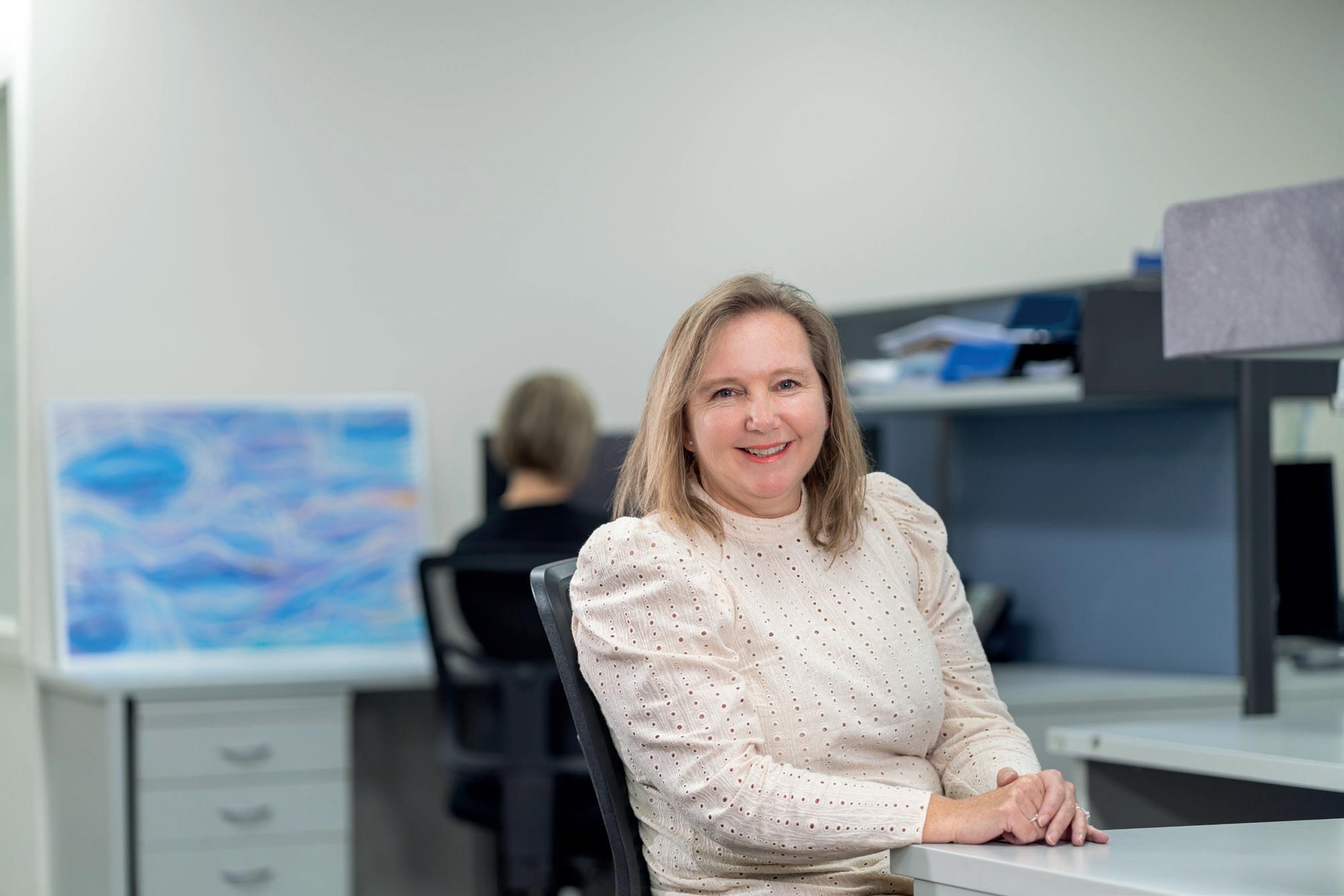
A conversation with two women within Interflow reveals a powerful sense of purpose and confidence in the fact that you don’t have to be an engineer to shape the future of water.
As she knocked on the door of an elderly lady’s house, Interflow’s Community Relations Manager, Joanna Rodd, had no idea that she was about to experience a memorable moment that clarified the purpose of her role.
“This lady was 94,” Rodd said.
“She had lived in her home for 60 years and was lonely and was nervous around project teams on her property. But she sat and had a cup of tea with me and quickly understood that the work we were doing was vital and for her community’s good.”
Rodd had never expected to find her calling in the water infrastructure sector. She originally thought the sector would be a male-dominated space prioritising engineers and tradespeople. However, after three years in her role, she said the experience has been nothing less than transformative.
“Interflow has been phenomenal for me,” Rodd said. “The support I have received here has been nothing short of amazing.”
Interflow Chief Financial Officer, Tracy Black, said women are well represented at every level of Interflow. Three of eight executive positions are held by women. Around 24 per cent of all project managers are women, too.
“That visible female leadership, the very tangible nature of careers for women in a water infrastructure business like Interflow is an important signifier of future organisational success. It’s also essential for women in the business to see visible examples of where they could progress,” Black said.
“When I look at companies, I always look at their executive team,” said Black, who joined the Interflow leadership team in 2022. “For me, it’s a major red flag when I see organisations without any women on their executive team.”
Companies that focus on inclusion and diversity are also more likely to have a welcoming culture that enables people to be their true selves at work. People who have permission to be authentic are happier at work and, therefore, also more productive.
“They enjoy their work,” Black said, “and so they do it well.
“At Interflow there has been a conscious and well-designed effort to shift the balance. That has included diversity and inclusion strategies, regular leadership training programs open to all team members, and a gender pay gap that was measured as minus five per cent.”
Black said that part of the attraction of the water sector is the fact

that the results of the work are extremely tangible.
“I’ve worked for businesses where you can’t touch the product,” she said. “But with water, it’s tangible. You know that it’s essential, and people here feel that. There’s a sense of pride that’s contagious.
“So, to young women, I’d say go into a sector where you see people like you succeeding. Then lean into your strengths, always be collaborative and curious, and most importantly, always be yourself.”
To learn more, visit interflow.com.au
Deploying pedestrian detection technologies across council operations is essential to maximising the safety of both workers and the public, and minimising costly disruptions.
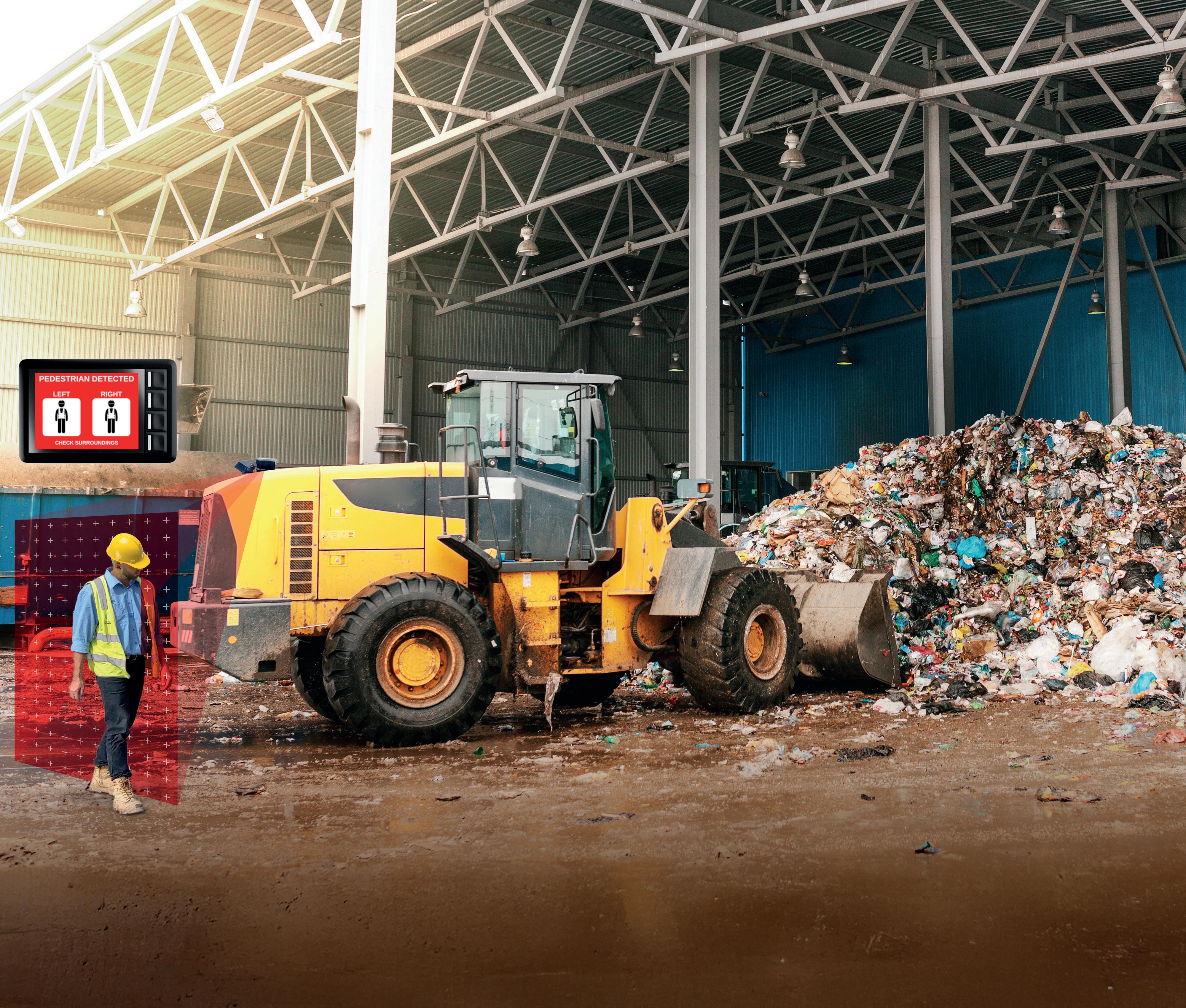
Minimising the risk of injuries around large mobile machinery remains a key concern for local governments, especially when operations bring plant into close proximity with the public.
Traditional people-plant separation systems have relied on tag-based alerts or administrative controls. In the dynamic environments of council facilities and project sites, these methods often fall short –especially when small errors can have devastating consequences.
Local governments across Australia are looking to adopt the latest innovations in pedestrian detection.
Recent advancements in AI have seen new hazard prevention tools become available to councils that can help keep people safe around a variety of machinery, from street sweeping vehicles to construction and earthmoving machines.
As public works and infrastructure delivery grow in complexity, councils are under increasing pressure to ensure high safety standards across all operations. This is especially true in environments where machine-human interactions are common, and site boundaries can shift daily.
The integration of smart detection technologies is no longer a luxury but a necessity – especially as part of broader
strategies to reduce incident rates and protect public trust. Councils also face stricter legislative requirements and community expectations.
By adopting AI-driven systems, councils can move beyond reactive safety responses and install proactive measures that prevent incidents from occurring in the first place. Additionally, these technologies can provide valuable data for post-incident analysis and training.
Sentinel Vision AI is an intelligent pedestrian recognition and warning system created by Premier Rock Machinery (PRM) Engineering Services.

Vision AI’s GPS heatmapping.

Sentinel Vision AI was developed over three years by PRM’s Brisbane-based team of experienced engineers. With an Australian Made certification, Sentinel Vision AI is specifically tailored for the unique safety requirements of the construction, waste, infrastructure and rail sectors. The system has been operating across facilities like landfills and transfer stations for more than five years, providing PRM with on-site learnings that help to inform Sentinel Vision AI’s continued improvement.
The system uses an array of cameras mounted to a mobile machine to detect in real time when a pedestrian enters the hazardous area.
Excavators, street sweepers, loaders, rubbish collection trucks and other plant all have different ranges of vision and motion, so the number and positioning of Sentinel Vision AI’s camera arrays are uniquely planned for each machine to cover all blind spots and assist the operator in handling the equipment as safely as possible.
Thanks to intelligent, AI-powered technology, Sentinel Vision AI’s detections of people within the set zone are highly reliable, meaning less false detections than traditional systems. This prevents operators from getting used to – and ignoring – the alarms. Additionally, Sentinel Vision AI achieves these
high-reliability detections without the need for wearable tags or special clothing.
With its unique voice alarm speaker system, Sentinel Vision can ‘talk’ to pedestrians who have entered a potentially hazardous area, cutting through the typical noise of a work site, and urging them to take steps to avoid the danger – all the while notifying the operator of the detected risk.
This two-pronged response has been reported to develop long-term behavioural change among workers regularly near heavy mobile machinery. Over time, Sentinel Vision AI has been recorded to activate less and less frequently, as people learn to recognise the appropriate distance to maintain between themselves and active equipment, greatly reducing the risk of accidents and near misses.
PRM’s extensive experience with mobile machinery across diverse sectors ensures that its systems are purpose-built for the realities of a work site. The Sentinel Vision hardware features industry-standard screens and programmable logic controllers (PLCs) designed specifically to handle harsh conditions.
PRM’s continued industry presence and innovative adoption of new technology helps it to continually develop improvements for its tools.
Sentinel Vision AI now boasts new datalogging capabilities, allowing it to record videos of detection and events and store the GPS location, time and other critical information. These logs can be downloaded straight from the system and used to debrief after incidents and plan to minimise future recurrences. Alternatively, event reports can be uploaded to the cloud, providing seamless and secure storage of incident data. GPS Heatmaps of the detections are also uploaded, allowing supervisors to pinpoint hotspots and high-risk areas to help with review and improvement of traffic management plans. Any system faults are also uploaded and can be monitored to assist in system maintenance. The system also features prestarts that are recorded and tracked to ensure it is working correctly.
More reliable than human spotters, Sentinel Vision AI represents the next step in safety for all projects that rely on mobile machinery. With reliable detections, sturdy hardware and proven results, local governments can rest easy with Sentinel Vision AI on watch.
To find out more about Sentinel Vision AI, visit prmenginering.com.au, or get in touch at sales@prmeng.com.au.
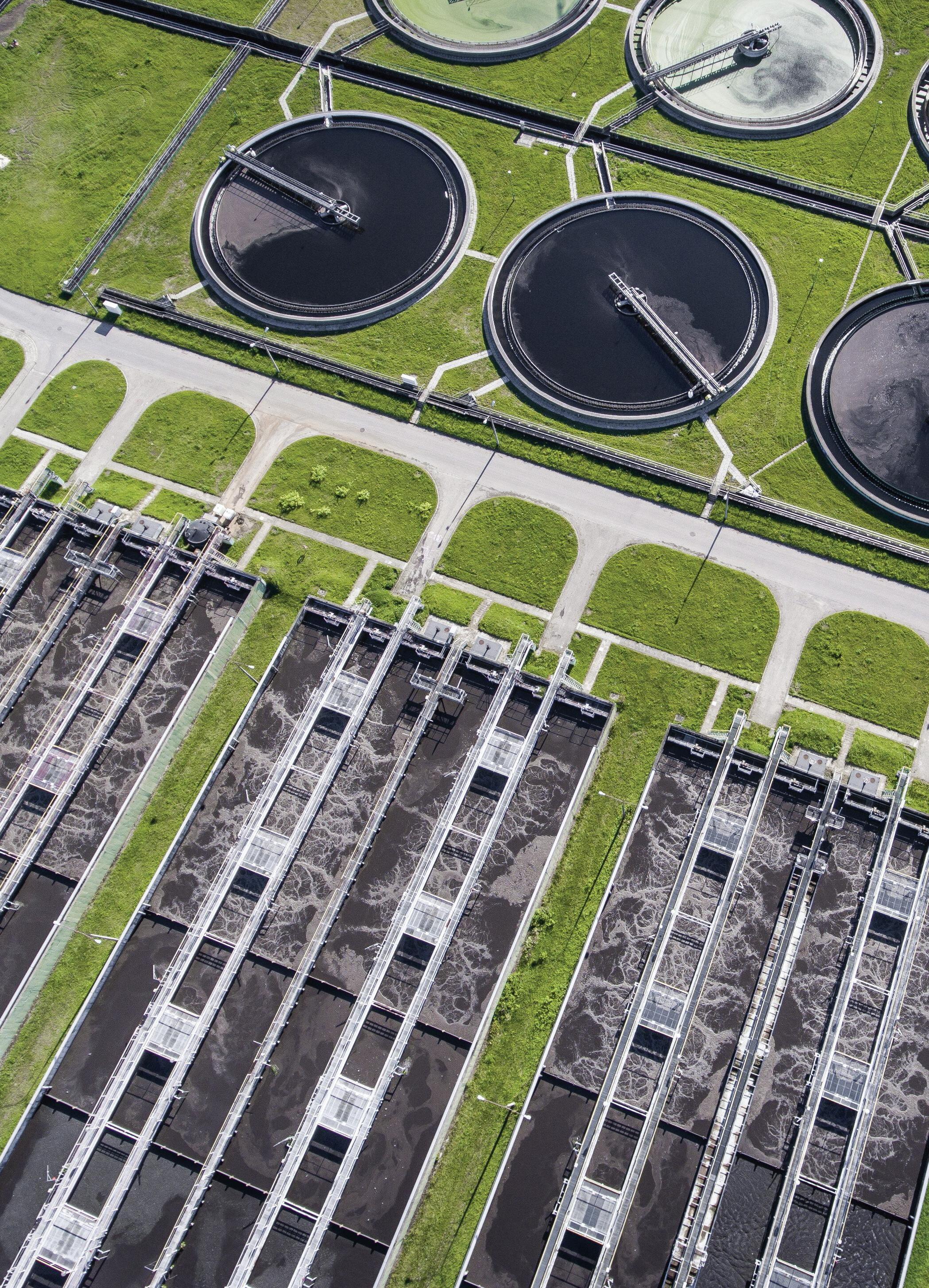
Millions of Australians love using gas in their homes and businesses every day, with thousands of manufacturers relying on it for round-theclock operations. When we look at the big picture of the energy landscape, it’s easy to see that gas isn’t just a transition fuel, it’s in transition itself.
Renewable gases, like biomethane and renewable hydrogen, are being demonstrated and developed around the country and already being used successfully overseas, in places like Europe, UK and USA.
Multiple energy solutions complementing each other, helping to achieve lower emissions efficiently and effectively. The energy transition is a task too big, too important, to put all our eggs in one basket.
If we look at the big picture we can find big opportunities, more options, more solutions, more ways to support the energy transition.

Across the region, public works practitioners, civil engineers, and asset managers are facing unprecedented challenges – and unprecedented opportunities. Ageing infrastructure, constrained budgets, climate pressures, and evolving community expectations have transformed the way the sector designs, builds, and manages public assets.
At the same time, new technologies, the AI revolution, data-driven decision-making, and cross-sector collaboration are opening doors to smarter, more resilient infrastructure systems.
That’s why the 2025 International Public Works Conference (IPWC) is more important than ever.
Held every two years, IPWC will take place in Sydney from August 25-28, at the International Convention Centre. The conference will continue its tradition of being the largest public works and infrastructure asset management event held in Australasia and will cover current best practices, local case studies, and the latest technological innovations.
According to IPWEA CEO David Jenkins, IPWC is designed to support the public works community and address the challenges local governments face –namely the need to deliver long-term, sustainable infrastructure and service delivery, while balancing cost-effective solutions and regulatory compliance.
“Public works are no longer just about building new infrastructure – it’s important to look after the assets you have and implement long-term, strategic and sustainable asset management,” Jenkins said.
“As new technologies continue to evolve, there is a growing awareness of green infrastructure as an alternative to creating resilient, future-ready communities, but what does that mean for our members and practitioners?”


agenda to try to help our audience address their challenges, better understand the latest technologies, have the space to speak with the peers, get solutions to shared challenges, and collectively we can work towards a better future for our local communities.”
The 2025 IPWC program will be centred around the theme “Shaping Tomorrow’s World” which highlights the urgency and need to create a resilient, forwardthinking foundation for public works and engineering.
The agenda will be designed with sessions across four streams to ensure practical, relevant takeaways for all attendees, including: Public Works in Action, Technology, Asset Management, and Sustainability.
Key sessions include:
• Professor Arnold Dix: Scientist, Professor of Engineering, and international tunnelling expert, Professor Dix will draw on his engineering expertise and share insights on teamwork, collaboration and leadership in challenging times.
• Kate Munari: Australia’s only female Navy helicopter pilot to fly
on effective leadership and tips to keep your team operating well in all situations.
• Local and International thought leaders including: Geoff Cooper, CEO from NZ Infrastructure Commission – Te Waihanga; Ursula Bryan, CEO at the Institute of Asset Management UK; and Adam Copp, CEO of Infrastructure Australia.
• Over 100 papers providing case studies from local government engineers, managers, and government consultants. With sessions designed to provide practical takeaways and equip public works practitioners with the knowledge and tools to drive change in their organisation, IPWC is not to be missed!
Attend the 2025 International Public Works Conference and be part of the conversation that helps shape the future of public works.
Visit the website for more information and register before June 29 to take advantage of early bird pricing at ipwc.com.au
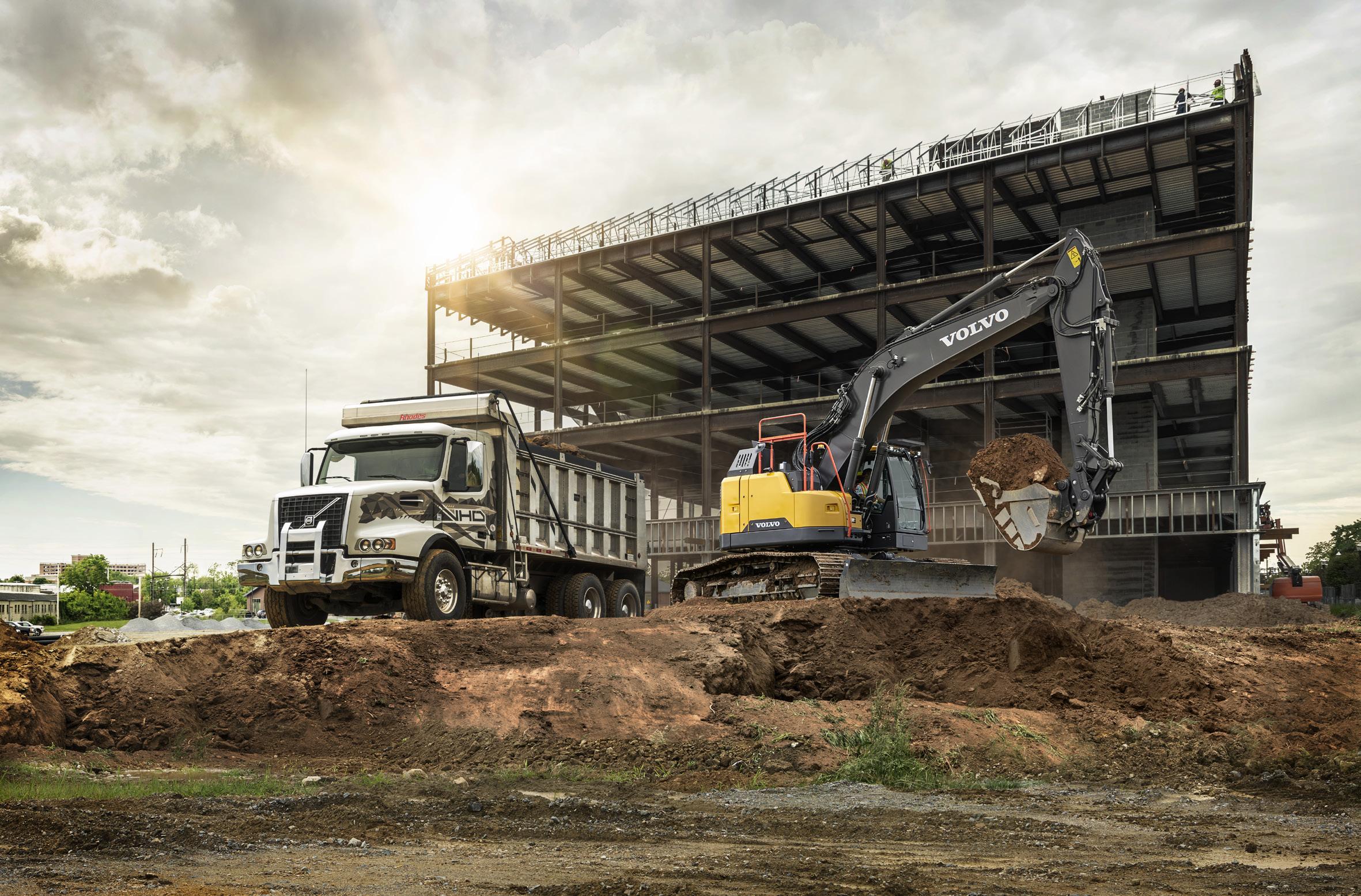
With local government budgets stretched thin, councils need to ensure that their urban development projects are completed on time and on budget, which is why choosing the right excavator for the job is vital.
Selecting the right excavator size and capability optimises job site performance, but budget-conscious councils also have to consider the bottom line. With innovative features and high flexibility, Volvo’s mid-range lineup can help meet all these needs.
The E-Series excavator range –including the ECR145E, ECR235E and ECR355E models – blend advanced technology with practical design features. On a long list of technical capabilities, the range also offers significantly improved fuel efficiency. Volvo says the machines deliver versatility and power across a wide variety of sites and operational needs, to achieve project efficiency and cost management.
Available in Australia through CJD Equipment, Volvo’s mid-range excavator lineup has three main models designed to meet specific operational requirements.
Volvo’s E-Series short-swing excavator range includes the ECR145E (14 tonne), ECR235E (23 tonne), and ECR355E (35
tonne) models. These machines feature a narrow body design with a centrally positioned boom that enables precise operation in tight spaces.
E-Series excavators have been shown to deliver 25 per cent better fuel economy than their predecessors.
The machines have a smart cooling system for optimal performance, engine speed regulation and pump optimisation, plus auto-engine idle and shutdown features that reduce fuel consumption. They also boast an electro-hydraulic control system, providing smooth and precise movement of the excavator’s boom and bucket.
Volvo’s short-swing excavator range has been engineered for compact worksites without compromising on strength or stability. Independent testing of their performance has shown the machines strike a balance of precision and power, supporting strong performance across varied tasks.
The short swing radius design allows operators to work safely and efficiently
in tight spaces – particularly valuable in urban environments where conventional machines often struggle. The ECR145E, ECR235E and ECR355E retain full power and lift capacity while offering improved manoeuvrability and access on congested sites.
Operator support systems in the Volvo E-Series are designed to boost operator productivity without removing control.
The series includes some advanced features for efficiency and performance. Up to 20 different attachment settings can be saved under password protection, and adjustments to hydraulic flow and pressure can be made directly from the cab.
Volvo has also introduced electric pedal control for precise attachment operation. The E-Series also features an integrated valve system working in tandem with ECO mode to enhance fuel efficiency without reducing performance. Together, these features aim to support consistent, controlled operations across a range of job conditions.
Understanding the financial side of excavator ownership is key to making
Alongside reduced fuel use, the machines are designed to lower maintenance costs through proactive diagnostics, and offer extended warranty coverage.
Volvo puts operator wellbeing at the forefront with its Volvo Care Cab ensuring low noise levels, minimal vibration and unmatched visibility through large glass panels with slim cab pillars.
The cab also includes an industryleading air circulation system with 14 well-placed vents, a multi-adjustable seat with up to 12 different position settings, ergonomic armrests and joystick console mounted on the same suspension to better absorb shocks. Comfort can be further enhanced by customisable control patterns and joystick responsiveness that operators can personalise from the monitor.
Also on the safety front, Volvo’s E-Series cab structures meet ROPS (roll over protective structure) certification standards to protect operators in challenging conditions.
Better visibility is achieved through Volvo Smart View, which provides an
immediate 360-degree overhead view of the machine, as well as side and rear-view cameras displayed on a colour
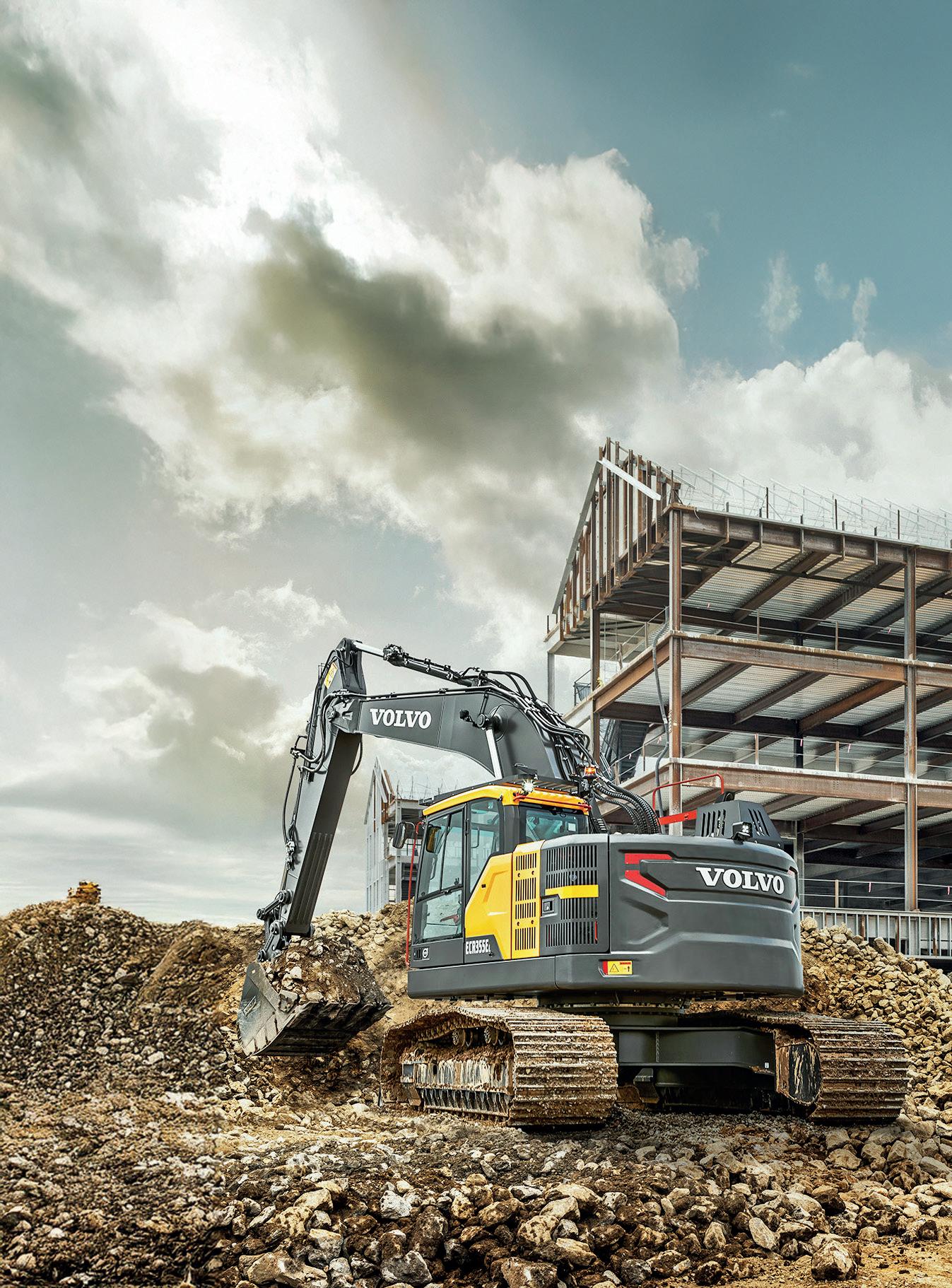
Councils need robust, flexible and long-lasting fleet vehicles to undertake their wide range of services, and by relying on a trusted manufacturer and provider, local governments can be sure to meet the needs of their communities.
In the dynamic Australian automotive market, GWM has emerged as a premier Chinese automotive brand, demonstrating impressive growth and reliability.
The first Chinese brand to enter Australia back in 2009, GWM ended 2024 with record Australian sales of 42,782, earning it the tenth spot on the sales-bybrand charts.
This success is not just resonating with individual consumers but also presenting a compelling case for Australian councils seeking dependable fleet solutions.

GWM’s remarkable 2024 sales figures underscore its growing credibility and represent a 17.5 per cent increase over its 2023 numbers. The Haval Jolion, with its strong sales, is a key driver of this success, indicating growing consumer confidence in the GWM brand.
The company is now aiming for more than 50,000 sales by the end of 2025, with GWM executives saying that it will achieve this result thanks to the continued expansion of its dealer network, a significantly new and updated model rollout, as well as the strong performance of its existing model range.
The model rollout consists of seven new or updated models in 2025, including the already launched GWM Cannon ute refresh, the plug-in hybrid (PHEV) version of the Haval H6 GT, and the diesel version of the Tank 300. The Cannon Alpha PHEV is set to launch in June, while the new-gen Haval H6 and all-new H7 will arrive in the third quarter. Between now and the end of 2026, GWM is expected to launch 14 new or updated models.
GWM plans to grow its dealer network from 113 sites to around 125 by the end of 2025, a move the company says will provide 98 per cent coverage across the country.
GWM recently announced experienced industry executive, John Kett, as its Australia & New Zealand Chief Operating Officer.
Kett comes to GWM with 35 years of industry experience, most recently from Hyundai Australia where he served as Chief Operating Officer for five and a half years.
Kett said that he is incredibly excited to be joining GWM.
“GWM is driven by a very talented workforce, partnered with a very focused and engaged dealer network, and enabled by an ever-evolving portfolio and technology offering,” he said.
“The sheer weight of numbers behind GWM certainly positions the brand very well at a time when customers are most discerning. Redefining and building confidence around the core values that differentiate the GWM brand is key.
“Ensuring tomorrow’s technology is within reach for everyone today will help build and strengthen GWM SUV, ute and off-road credentials across petrol, diesel, hybrid, plug in hybrids and EV powertrains, with five-star safety. All ultimately building a strong connection with our customer base, our GWM tribe. This is how we will continually grow.”
GWM National Fleet Sales Manager, Michelle Petrovski, said that GWM has been able to build trust in the market thanks to the quality, reliability and value of its vehicles.
“GWM vehicles are increasingly recognised for their build quality and durability, essential for both personal and council use,” Petrovski said.
“Offering a wide range of features and technology at competitive prices makes GWM an attractive option for budget-conscious councils. GWM is demonstrating a keen understanding
of the Australian market, tailoring its vehicles to meet local needs, including those with demanding fleet operations.
“GWM offers a range of vehicles, from robust utes to versatile SUVs, catering to the diverse needs of council operations, such as field work, inspections and community services.”
Petrovski said that GWM is investing in its Australian network, ensuring reliable service and maintenance, crucial for minimising downtime for council fleets.
“For Australian councils, reliability and cost-effectiveness are paramount. GWM’s proven track record of sales growth and increasing customer satisfaction makes it a viable option for council fleet procurement.
“GWM vehicles offer competitive pricing, potentially leading to significant savings for council budgets.”
In addition to its competitive price point, GWM’s five-star ANCAP safety rating and seven-year warranty help to build trust with communities and councils.
Petrovski said that GWM is committed to the Australian market.
“GWM’s growing presence and investment in Australia indicate a longterm commitment, providing councils with assurance of ongoing support.
Australian councils are seeking dependable and cost-effective partners for their fleet solutions. GWM’s success in the Australian market is reflective of a commitment to quality service and reliable vehicles, marking it as a compelling and trustworthy option for local government.
To learn more, visit gwmanz.com/au









Regular maintenance of sewer systems takes up a significant amount of time and resources for council staff, so in an age of rising costs, modern local governments need to find ways to make routine inspections fast and seamless.
Sewer inspections are crucial in ensuring the proper function of commercial and residential sewer systems. The duration of any given inspection can vary depending on several factors, such as the sewer system’s complexity, the property’s size and the inspection’s purpose.
Maintenance staff often use tools like camera poles to inspect manhole areas, capturing detailed data from inside the sewer system access points. These inspection tools let teams avoid confined space entry, saving time and avoiding potential safety concerns.
By combining the latest sewer inspection equipment with advanced software, inspection crews can gain valuable insights about the condition of assets in record time.
SECA’s QuickView 360 automated manhole inspection camera combines the agility of a pole camera with
advanced data capture and cloud-based reporting for fast, precise results.
With its mobile, handheld system and quick-release mechanism, workers can complete a full manhole assessment and deliver actionable insights in just five minutes.
The telescoping pole extends up to 10 metres, providing easy access to deep manholes, while the rechargeable battery supports up to 40 to 50 inspections in a single day, allowing council crews to maximise their efficiency and precision.
QuickView 360 turns complex inspections into fast, seamless operations and allows for rapid visualisation of data.
Data-driven online analysis automates defect coding and generates comprehensive 3D models of the inspected pipe. Maintenance teams can dive deeper into critical areas with
precise zooming capabilities, as well as export models for CAD integration and generate detailed reports.
These features allow councils to rapidly produce comprehensive and actionable inspection results, ensuring maintenance works are undertaken as soon and as accurately as possible. Featuring seamless integration with the WinCan Mobile app, the QuickView 360 is easy to use. It can connect with an iOS or Android for app-based touchscreen controls that allow users to view a live video feed with virtual pan and tilt, quickly adjust light intensity, or send inspections to the cloud.
From handheld manoeuvrability to automated data processing, QuickView 360 is designed to be deployed by a single operator, allowing for rapid completion of inspection works and delivering clear and critical asset data.
To learn more, visit seca.com.au


Every sporting champion started as a little spectator. It’s why having the high quality, inclusive spectator facilities at your sports grounds matters. Felton can help.
Our versatile grandstands mean everyone can be inspired by their heroes - starting from just $1,999.
So, everyone gets a view
Transport Certification Australia (TCA) has certified Geotab as an Application Service Provider for the Telematics Monitoring Application (TMA) and Road Infrastructure Management (RIM) applications under the National Telematics Framework.

As a certified Application Service Provider, Geotab can now help transport operators to enrol in government schemes and initiatives that use TMA and RIM to provide access or productivity benefits. This certification builds on TCA’s earlier type-approval of Geotab’s GO9-LTM telematics device and means vehicle operators can now use the device for enrolment in TMA and RIM schemes. Geotab, a global provider of connected vehicle technology and fleet management solutions, has delivered innovative telematics services for more than 25 years, helping transport operators to achieve greater productivity, safety, and compliance.
Paddy Goodall, Austroads’ General Manager of Service Delivery, congratulated Geotab.
“Geotab’s certification as an Application Service Provider, combined
with the earlier type-approval of its GO9-LTM device, underscores its commitment to meeting the highest standards of performance and reliability in telematics technology. These achievements provide transport operators with confidence in Geotab’s solutions as part of the National Telematics Framework,” Goodall said.
“TCA’s certification and typeapproval processes ensure telematics providers meet rigorous technical and functional requirements. These processes are key to fostering trust and confidence in the data and technologies that underpin the National Telematics Framework.”
Commenting on the certification, Andrew Hintz, Geotab’s Associate Vice President, Heavy Transport Australia said, “Geotab is committed to delivering top-tier telematics solutions
to meet the evolving needs of the Australian heavy transport industry.
“Our TMA solution not only enhances compliance and efficiency but also expands our operations to support a growing market.”
Geotab’s GO9-LTM device is suitable for TMA schemes requiring selfdeclarations of the load status by the drivers. Additionally, Geotab will be working with TCA to obtain pairing approvals with one or more Smart On-Board Mass system suppliers, enabling it to provide additional services to transport operators in the near future.
Transport operators and other stakeholders interested in learning more about TMA and the benefits of telematics under the National Telematics Framework can visit the TCA website tca.gov.au.


ResourceCo’s integrated resource recovery sites position us as a leader in landfill diversion.
There’s not much we don’t recycle; from construction, demolition, commercial and industrial waste to soils and tyres – at ResourceCo we’re committed to making sure that waste is never wasted. Where others see waste, we see opportunity.
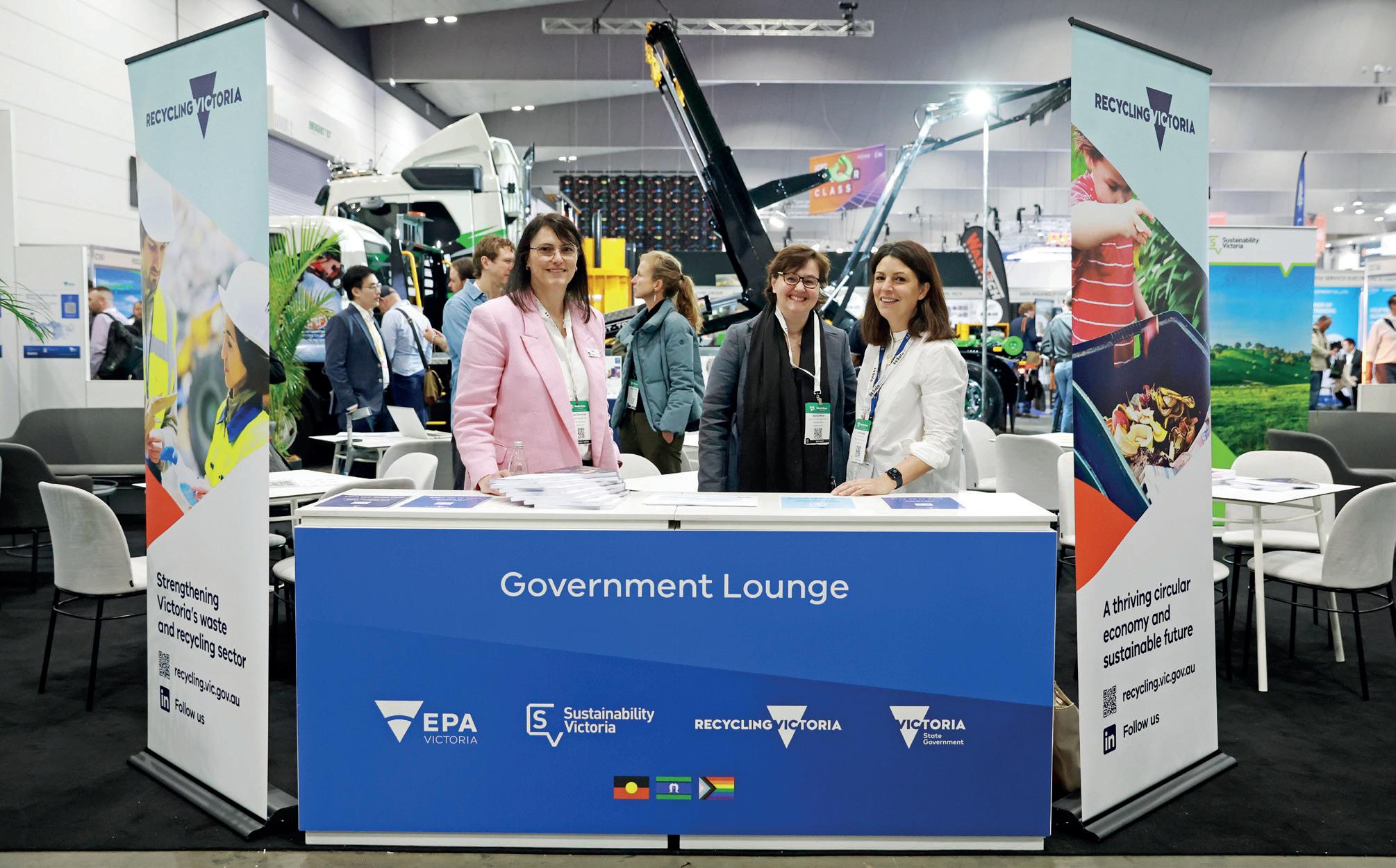
Waste Expo Australia 2025 returns to Melbourne, providing councils, government agencies, and industry leaders with a crucial platform to explore the future of resource recovery, recycling, and sustainable infrastructure.
As Australia moves closer to a circular economy, the event will be key for those at the forefront of environmental change.
This year, the Government Lounge will once again feature Sustainability Victoria, Recycling Victoria, and Environment Protection Authority (EPA) Victoria. These government bodies will share valuable insights into the latest strategies and initiatives advancing sustainability and circular economy practices in Victoria. With a focus on collaboration, the Government Lounge will be a hub for discussions and insights into the future of waste management and sustainability for the state.
Recycling Victoria exists to ensure Victorians have access to reliable waste, recycling, and resource recovery services.
“Our focus is on building resilience in the sector, to increase market investment and growth and a more
sustainable future for Victoria,” said Tony Circelli, Head, Recycling Victoria.
“We will be using the Waste Expo Government Lounge as a platform to discuss our areas of focus from market data and intelligence, infrastructure planning, and the Waste to Energy Scheme, to our approach to riskbased, outcomes-focused regulation and compliance.”
A major highlight of Waste Expo Australia 2025 is the partnership with ecologiQ’s Greener Infrastructure Conference. ecologiQ is driving the reuse, recycling and repurposing of waste materials on road and rail infrastructure across Victoria, delivering successful projects and circular outcomes.
Sherri Pearson, Exhibition Manager, Waste Expo Australia, said the partnership between Waste Expo Australia and ecologiQ bridges the gap between resource recovery and
sustainable infrastructure, fostering collaboration and driving innovation across both sectors.
“Local governments play a crucial role in waste management and achieving national waste targets by providing essential services, managing infrastructure and promoting community awareness and engagement,” Pearson said.
“With the ongoing drive for sustainability at the forefront of local and national policies, Waste Expo Australia 2025 is the perfect opportunity for councils, government agencies, and industry professionals to connect, learn, and drive meaningful change.”
Registration is now open – don’t miss your chance to be part of this pivotal event in the waste and resource recovery sector.
For more information and to register, visit www.wasteexpoaustralia.com.au.
Councils play a critical role in protecting public health by ensuring that the risks posed by air emissions are effectively managed. This responsibility spans the assessment of environmental impacts from new developments, to managing compliance and resolving nuisance issues from long-established operations.
To reduce regulatory risk and strengthen decision-making, many councils enlist specialist service providers. These experts not only help validate internal assessments but also offer crucial support on more complex or contentious issues – particularly when legal proceedings arise. External expertise can range from light-touch advice, peer review of technical reports, to full expert witness services if contentions cannot be resolved.
Peer review services are especially advantageous in the development application processes. They enhance the reliability of submitted reports, highlight potential oversights or weaknesses, and provide councils with additional assurance in their decision-making.
Council-led developments also require rigorous air quality assessment. The challenge lies in delivering reports that are both technically robust and accessible to the community. These assessments aim to determine the potential magnitude of emissions and, more importantly, to recommend appropriate mitigation measures – through engineered solutions and effective management practices.
A well-executed peer review can also reduce operational pressures to councils, by limiting need for future compliance
actions, such as responding to recurring community complaints or imposing improvements through enforcement.
Peer review often improves the overall quality of applications, helping to expedite approvals and support economic development.
Air quality issues are often in the spotlight, especially as state governments tighten compliance expectations, as communities grow more aware of environmental health risks and are more protective of their amenity values.
With residents increasingly aware of the health issues of dust, odour and air emissions, a robust air quality assessment can inform a council and strengthen its position when responding to concerns, and often the public perception of risks.
For councils, this means that a vigorous due diligence process is becoming increasingly important, both to meet its legislative requirements and to retain and promote public trust.
Failure to properly assess and mitigate environmental risks can lead to lengthy and often costly project delays, reputational damage and even legal action. Councils are increasingly setting their own standards to be both transparent and proactive when assessing

environmental risks, which often requires an understanding of the effects of multiple emission sources affecting the community in aggregate.
Also, by including quality assessments early in the planning process, councils can avoid having to make reactive fixes down the line. The evidence-based understanding of local air conditions can also feed into ongoing environmental planning and sustainability goals and promote better environmental outcomes for the community at large.
Councils seeking independent, expert support can partner with qualified and trusted practitioners such as Northstar.
Northstar is a trusted, independent and innovative specialist air quality, environmental and sustainability practice, and specialises in all aspects of air quality, dust, and odour management. Their air quality services include monitoring, modelling, environmental assessment, due diligence, regulatory advice, licensing support, expert peer review and the provision of expert witness services.
With a strong foundation in environmental management, the Northstar team assists councils with auditing, data analysis, environmental planning, and the development of management plans. Their insights go beyond compliance, helping to identify risks and opportunities that support long-term sustainability outcomes.
In addition to air quality expertise, Northstar provides broader environmental services including sustainability strategy, ecologically sustainable development (ESD) reporting, and custom greenhouse gas and energy inventories.
As a trusted partner for council, Northstar delivers timely, pragmatic, and evidence-based guidance to help councils ensure compliance, improve project outcomes, and ultimately protect community wellbeing.
To learn more about Northstar’s services, visit northstar-env.com.
A new generation of council-aligned contractors is helping shape a more inclusive future for local government works. Among them is Amarapave, whose Managing Director Jenika Stubelj will speak at Converge Expo 2025.
As local governments across Australia confront mounting workforce shortages, especially in skilled trades and civil works, the push for more inclusive employment pathways is gaining traction.
Amarapave – a social enterprise specialising in asphalt services – is actively breaking down barriers in one of the most traditionally male-dominated segments of the sector. It’s doing so not just by delivering quality paving jobs, but by changing perceptions of who belongs on a crew.
In local government, where procurement frameworks often carry social or community benefit clauses, contractors like Amarapave represent a practical avenue for aligning operational works with broader inclusion objectives.
“We can deliver an asphalt paving job just as well as every other company with regards to quality. But we’re also showcasing that there’s a different way of thinking,” said Amarapave Managing Director Jenika Stubelj.
“Ash (MacMahon, Field Director – Amarapave), who identifies as nonbinary, runs our crew. I don’t think that’s been seen before in the asphalt industry.
“We’re very much about breaking stereotypes and empowering people. The best way to do that is to actually get out there and showcase our work.”
Stubelj is among five featured speakers at Converge Expo 2025, where she will present on the Championing Change panel. The session aims to help councils and contractors alike rethink how their workforces can better reflect the communities they serve.
While many local governments have inclusion policies in place, translating those values into on-ground delivery can be a challenge. Events like Converge are helping to close that gap by bringing together council officers, contractors, and civil construction leaders in one space.
Converge 2025 is a new national expo that merges the Municipal Works and Commercial and Civil Construction sectors for the first time. It promises to deliver a fresh look at the future of public works and infrastructure through the lens of innovation and social value.
“We work in a field where we’re always innovating, and we’re always looking for a better way to do things,” Stubelj said.
“At trade shows like Converge, you go along with the intention to learn and see what the rest of the industry is doing.
“They’re a great collection of innovations, whether that’s in human resources, technology or people, there’s usually something new to learn.”
Stubelj said her panel will explore practical strategies councils and service providers can adopt to foster inclusive employment – starting with who they choose to work with.
She believes these conversations are timely for local governments seeking to embed equity across both their internal teams and outsourced workforces.
“I think it’s really cool that there’s a whole selection of really inspirational, powerful female role models that are going to be talking at this event,” she said.
“When you have these opportunities and you can tell your story, quite often there’s going to be people in the audience that resonate. Ideally, it’s those people who can share our insights within their own organisations. Then, hopefully we’ll see more ripple effects.”
For council procurement teams and works managers, the panel offers insights into how diversity can drive not only social value but also performance and innovation. Stubelj said expectations from new workforce entrants –particularly younger generations – are shifting fast.
“People entering the workforce these days are looking at organisations through a cultural lens, and looking for workplaces that are serious about equality,” she said.
“Are there equitable opportunities for training and development? Do people feel like they can contribute their opinions? If they speak up about something, are they going to be heard, or are they going to be discriminated against for trying to go against maybe the status quo?
“People naturally are drawn to that feeling and sense of purpose at work. You want to go to work and feel like you’re valued and you’re contributing to something, regardless of the financial compensation.”
Stubelj said these cultural shifts should prompt local governments and their delivery partners to reflect on what kind of employer brand they project
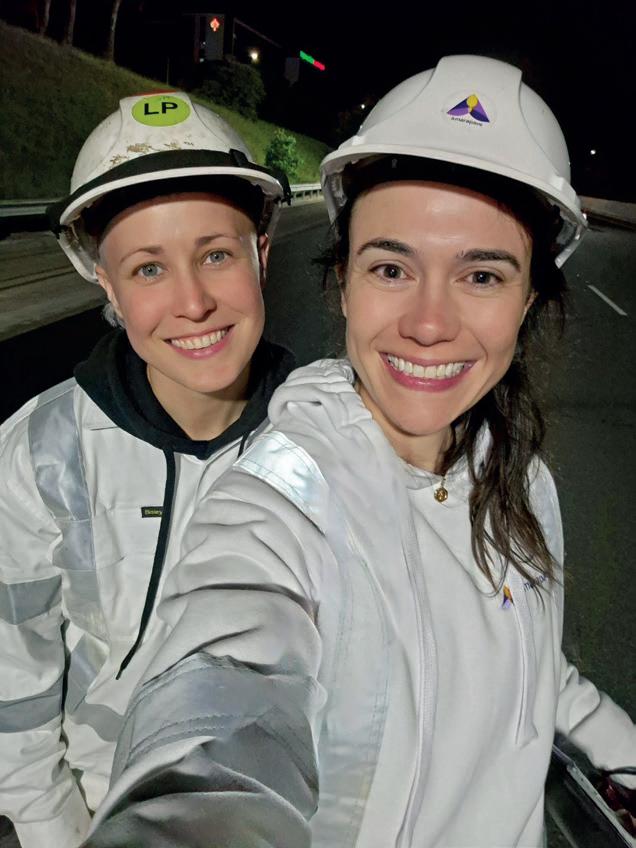
– especially when it comes to tenders and subcontracting.
She believes more people today are asking: ‘Do I belong here?’ rather than ‘How much does it pay?’
That mindset is reflected in Amarapave’s own hiring model, which prioritises capability, potential, and lived experience. The company is steadily building a reputation with local councils and state agencies alike for delivering professional-grade results with a strong social impact.
“I get a real buzz out of being able to create employment outcomes,” Stubelj said.
“It’s fantastic when we can bring someone in who’s been trying to get into construction industry and has had the doors shut on them. It’s great to give those people that opportunity, then to see them flourish and grow.
“We’re excited about continuing to build the next generation of asphalters.”
With councils under pressure to address workforce shortages while upholding social procurement goals, Amarapave offers a model for what’s possible when inclusivity is not an afterthought but a core business principle.
Converge Expo 2025 will take place on 17–18 September at the Melbourne Convention and Exhibition Centre.
For more information on exhibiting and attending, visit convergeexpo.com.au to download the prospectus, or contact the event team directly on +61 3 9690 8766 or converge@primecreative.com.au.
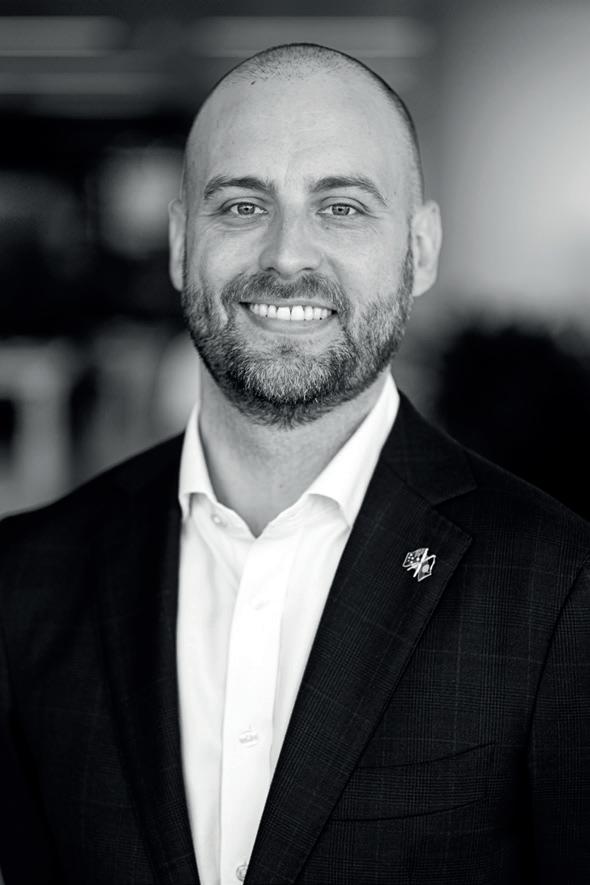








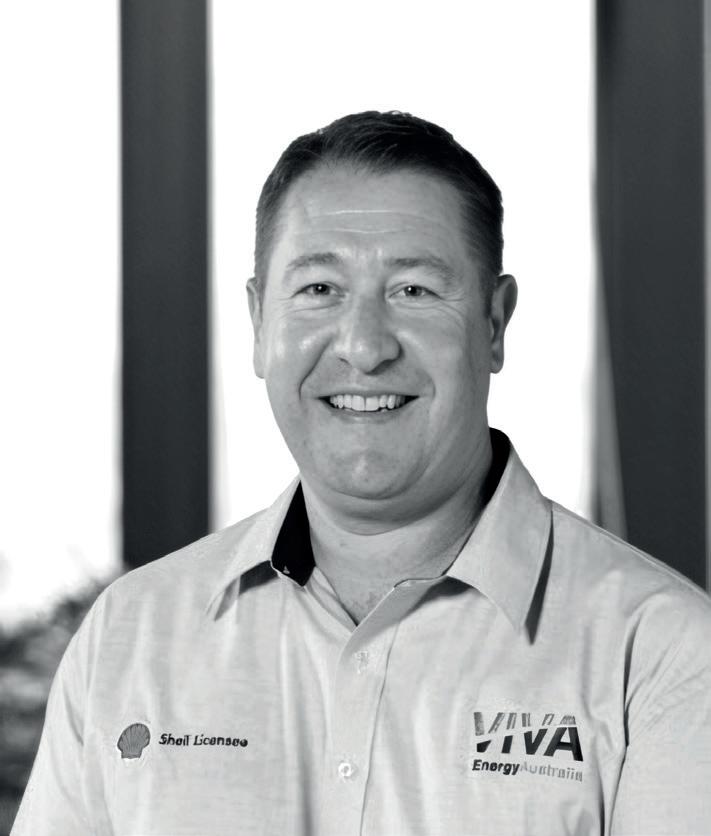
With Geotab’s telematics technology, you can monitor almost every aspect of your vehicle fleet to gain the necessary insights to run operations smoothly and efficiently. Geotab’s devices can elevate your fleet management in numerous ways, including:

Vehicle monitoring to increase fleet visibility and cut down on costs.


Tracking and management to know exactly where your assets are.

Predictive maintenance and diagnostics to improve asset uptime.
Installation is quick and easy on all kinds of vehicles. Get in touch to find out what solution will work best for your fleet at www.geotab.com/au/

On-vehicle cameras to help monitor garbage collection or driver safety.
